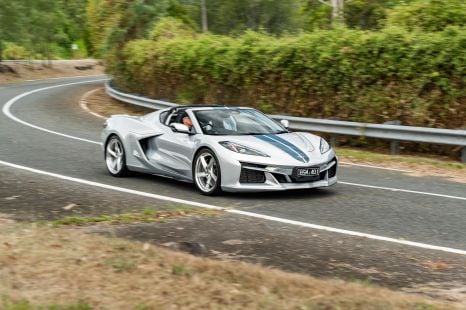

CarExpert.com.au
The CarExpert team's favourite cars of 2025
4 Hours Ago
Sporty Ford meets chic Nissan meets sensible Volkswagen, in a small urban SUV showdown comparison test for the ages.

Senior Contributor
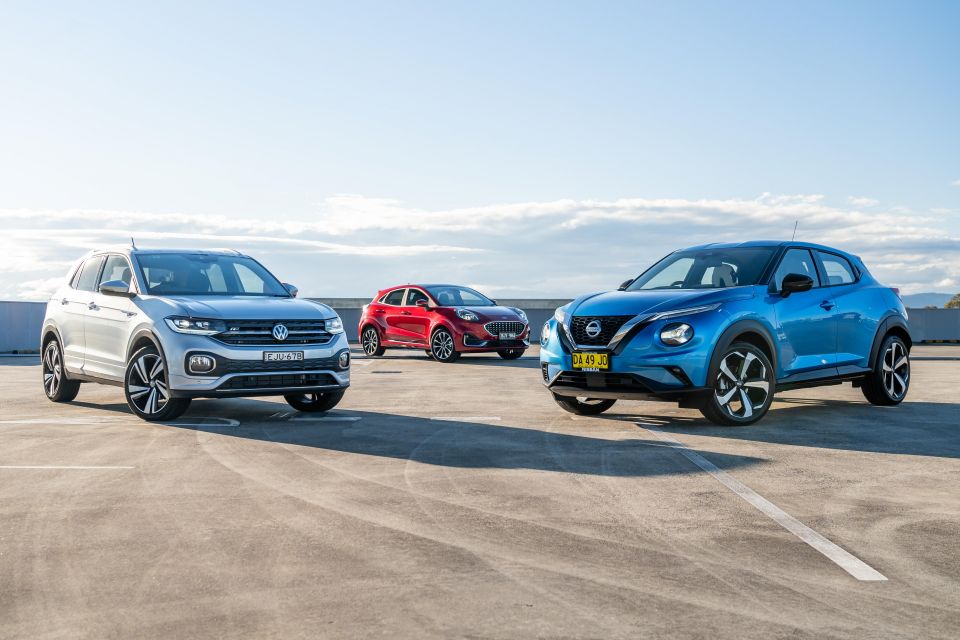

Senior Contributor
Car buyers are gravitating to urban SUVs, seemingly happy to suck up premium prices in exchange for greater ride height and head-turning designs.
The trio on test here work particularly well as a three-car showdown because they each prioritise a different type of buyer.
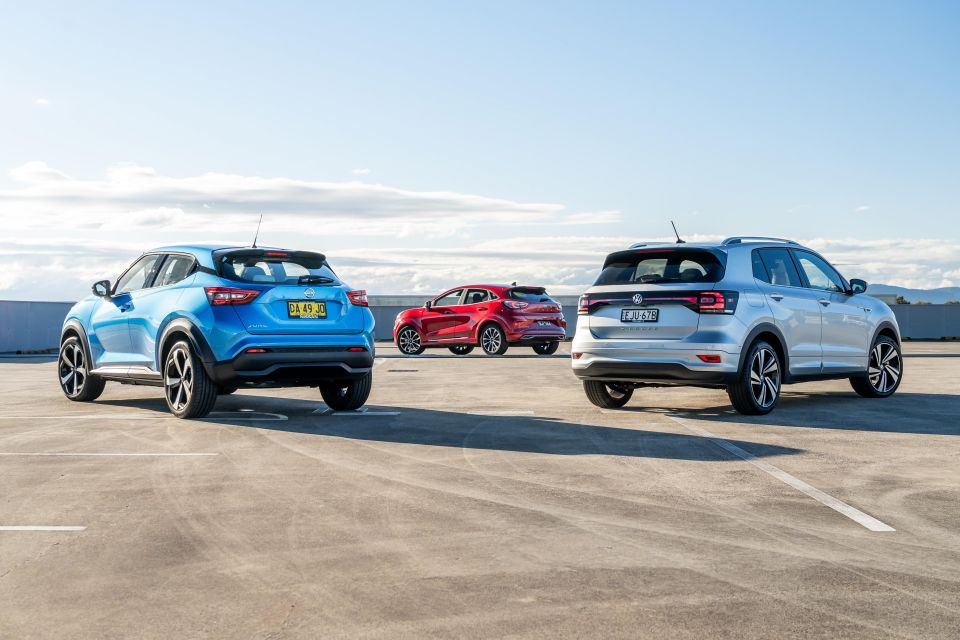
The Romanian-built Ford Puma takes its name from a cult classic coupe of the late 1990s, and delivers on the promise with standout sporty handling. Just as its Fiesta underpinnings suggest.
Nissan’s first-generation Juke helped kick off a craze, and this new (again UK-made) iteration takes the baton. As ever it’s a fundamentally design-led machine, making it a standout in the company’s showroom.
The German-built Volkswagen T-Cross is a Polo on stilts, and as such clearly the most ‘sensible’ contender here. A useable down-sizer in the traditional sense, it comes comparatively free of compromise.
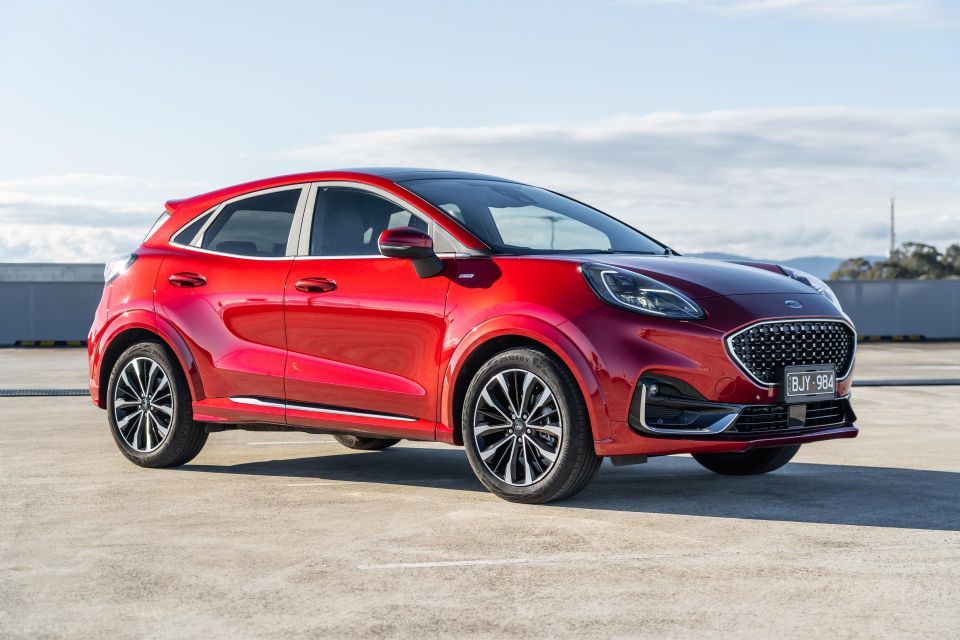
We are looking at each of this trio in highly-specified form, making them quite pricey.
The 2021 Ford Puma ST-Line V sits atop its range and costs $35,540 before on-road costs that vary depending on where you live.
The 2021 Nissan Juke ST-L+ tested here sits one rung below the flagship Ti. Its list price is $35,140 before on-road costs.
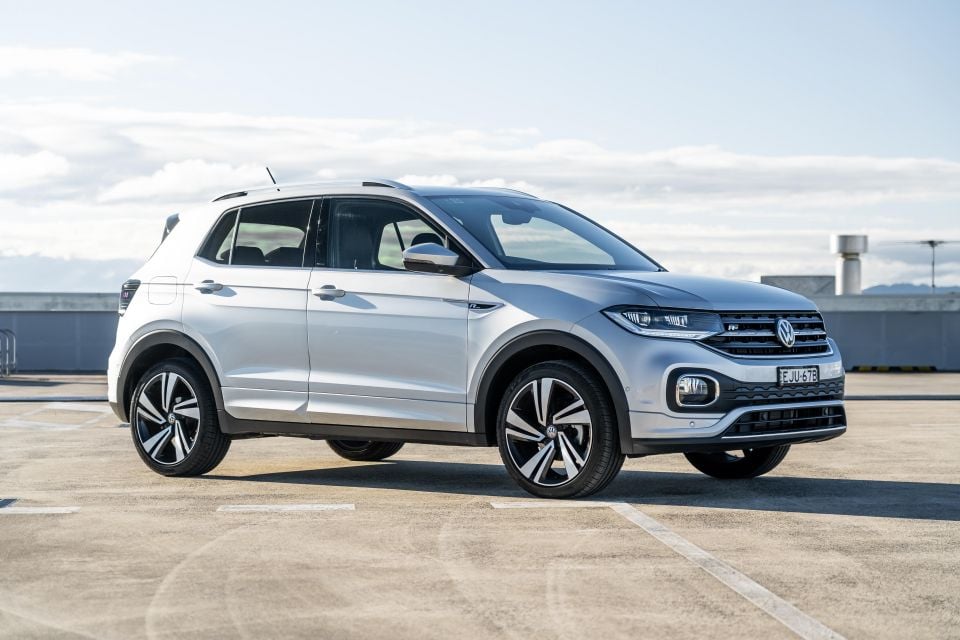
The 2021 Volkswagen T-Cross 85TSI Style seen here is top-of-the-range variant, priced from a sharper $31,390 before on-road costs – albeit sans option packages.
Just for some context, you can buy any on of this trio for appreciably less if you’re happy to get one with fewer luxury features.
The base Ford Puma costs $29,990, the base Nissan Juke ST $27,990, and the base Volkswagen T-Cross 85TSI Life $28,390 – all once again before on-road costs.
Vehicles driven:
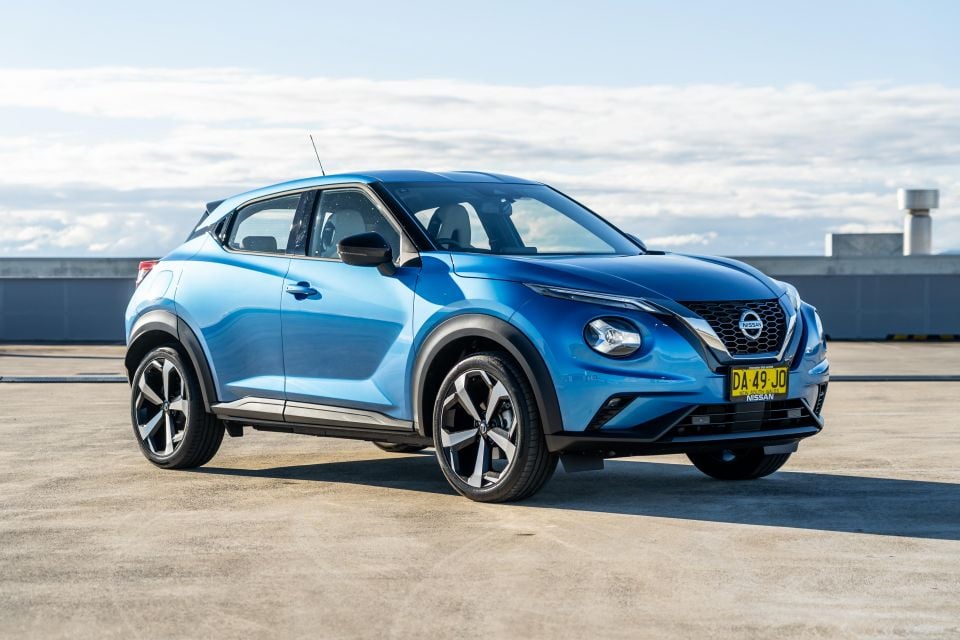
Options fitted:
Prices as tested:
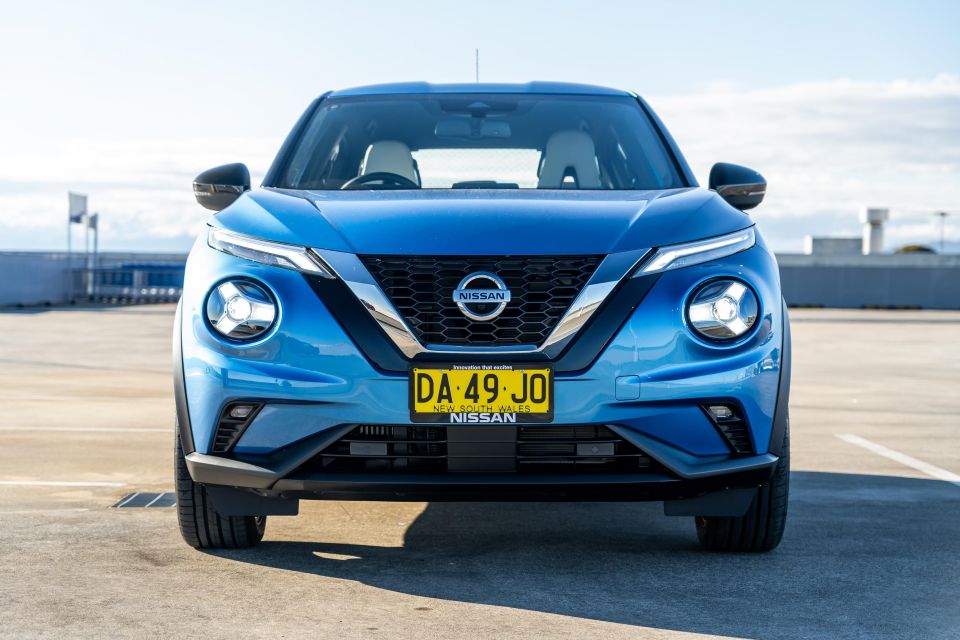
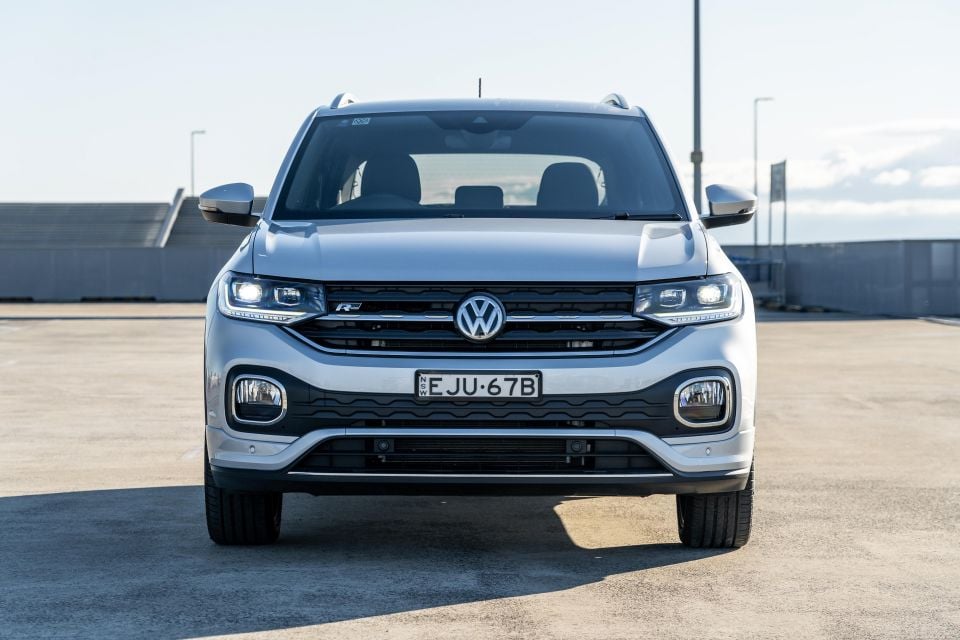
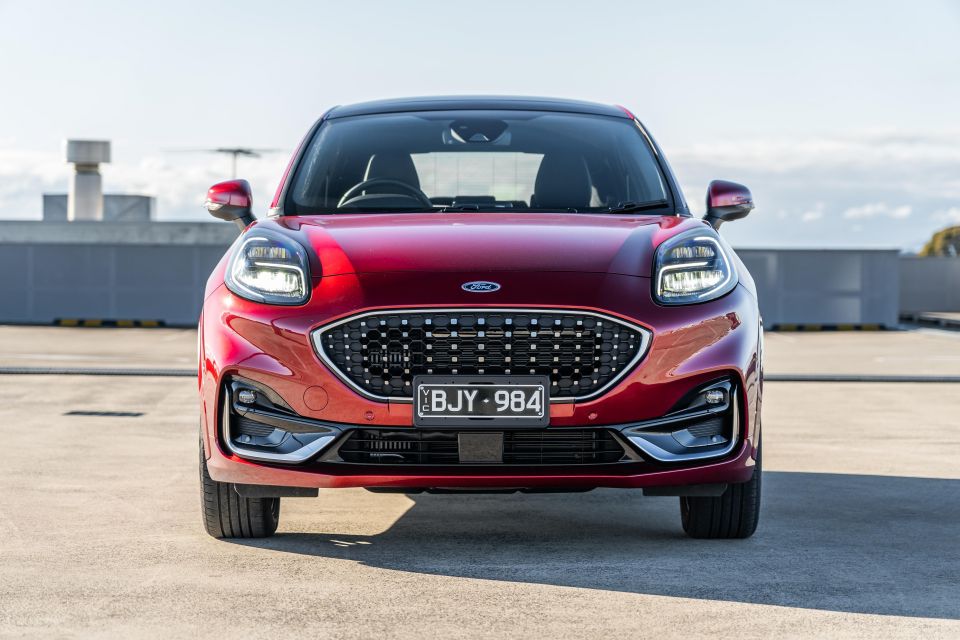
This section will focus on the vehicles tested, inclusive of fitted options.
On the outside all come with contemporary LED headlights, daytime running lights and tail lights. Yellow halogens are so 2003. Each also gets hands-free proximity key access and auto rain-sensing wipers.
The Ford and Volkswagen (as tested) have 18-inch alloy wheels, whereas the Nissan ups the ante by rolling on 19s. All three use name-brand tyres: Continental for Ford, Hankook for Nissan, Pirelli for Volkswagen.
The Ford offers a powered tailgate and was fitted with an optional panoramic glass sunroof with manual interior cover – not available on the other pair.
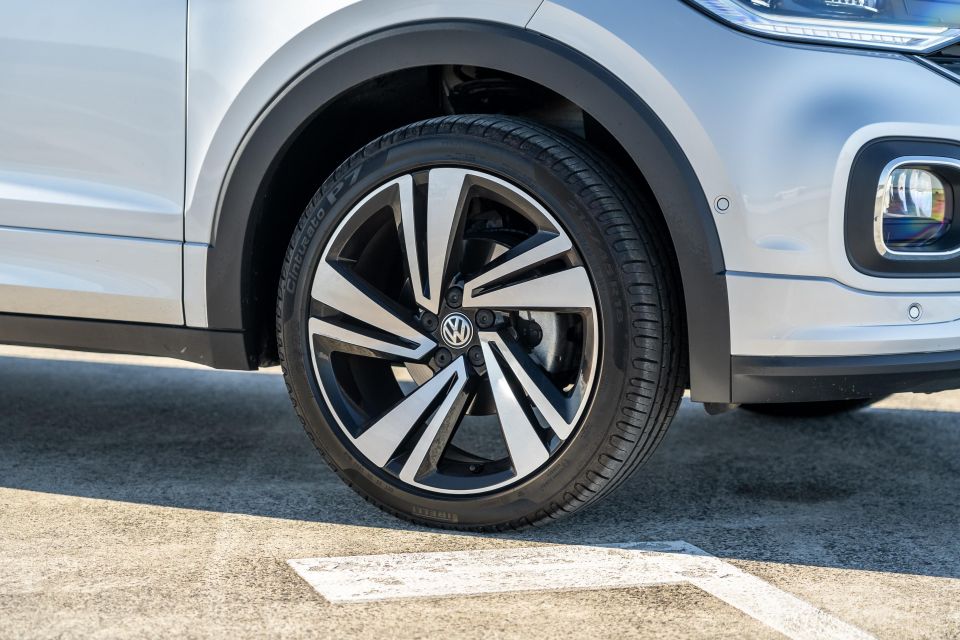
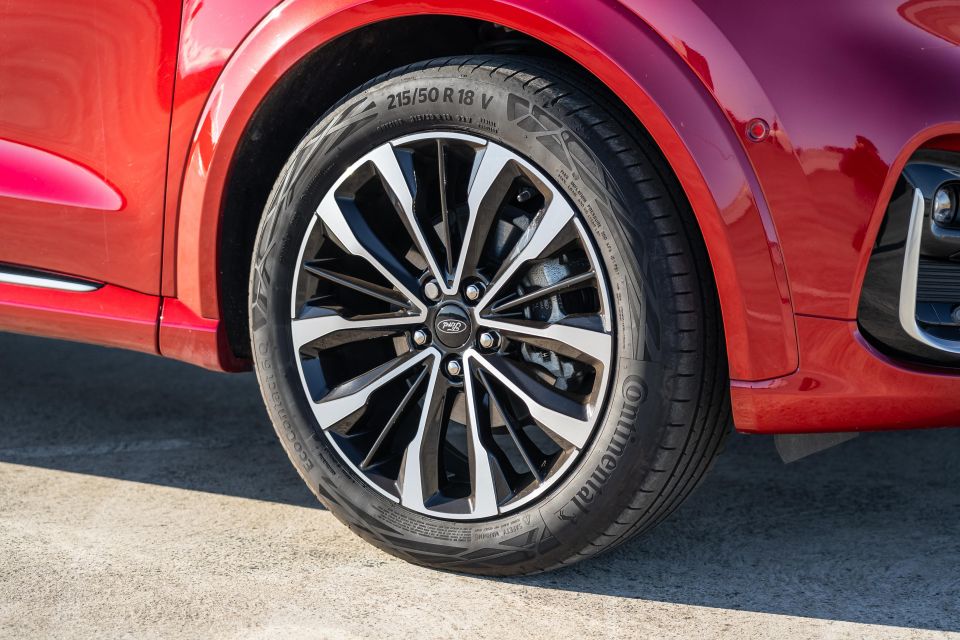
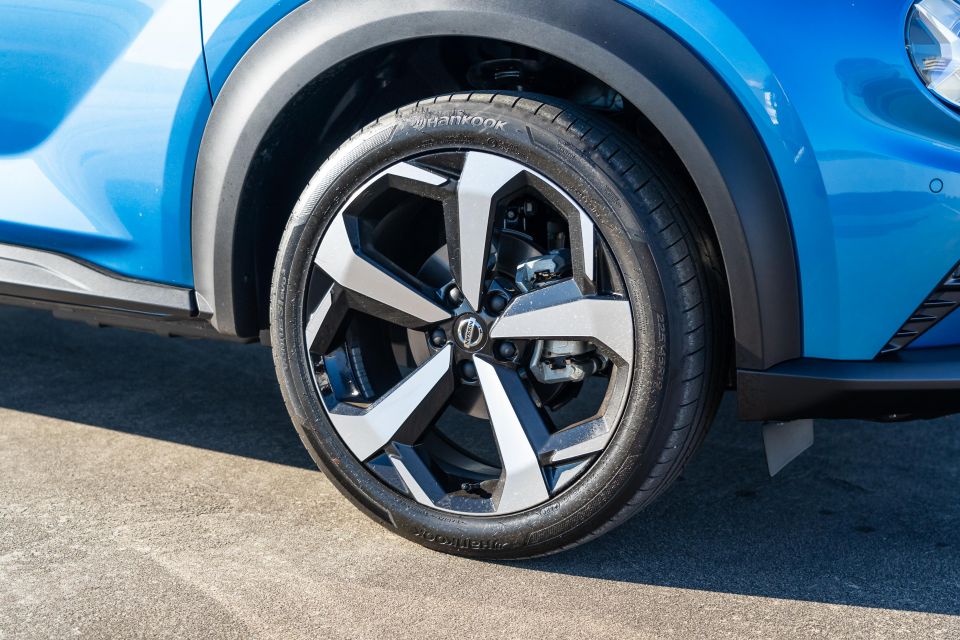
| Ford Puma ST-Line V | Nissan Juke ST-L+ | VW T-Cross 85TSI Style | |
|---|---|---|---|
| Wheels | 18-inch | 19-inch | 18-inch fitted option |
| Tyres | Continental EcoContact | Hankook Ventus | Pirelli Cinturato |
| Spare | Temporary | Temporary | Temporary |
| Headlights | LED | LED | LED |
| Tail lights | LED | LED | LED |
| Daytime lights | LED | LED | LED |
| Proximity key | Standard | Standard | Standard |
| Sunroof | Fitted option | No | No |
| Tailgate | Powered | Manual | Manual |
| Wipers | Rain-sensing | Rain-sensing | Rain-sensing |
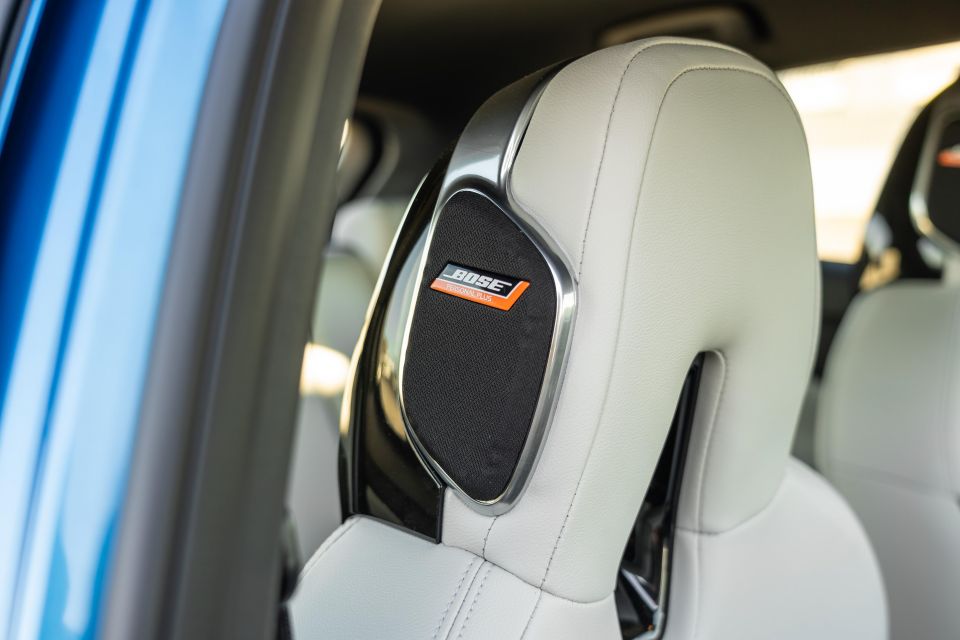
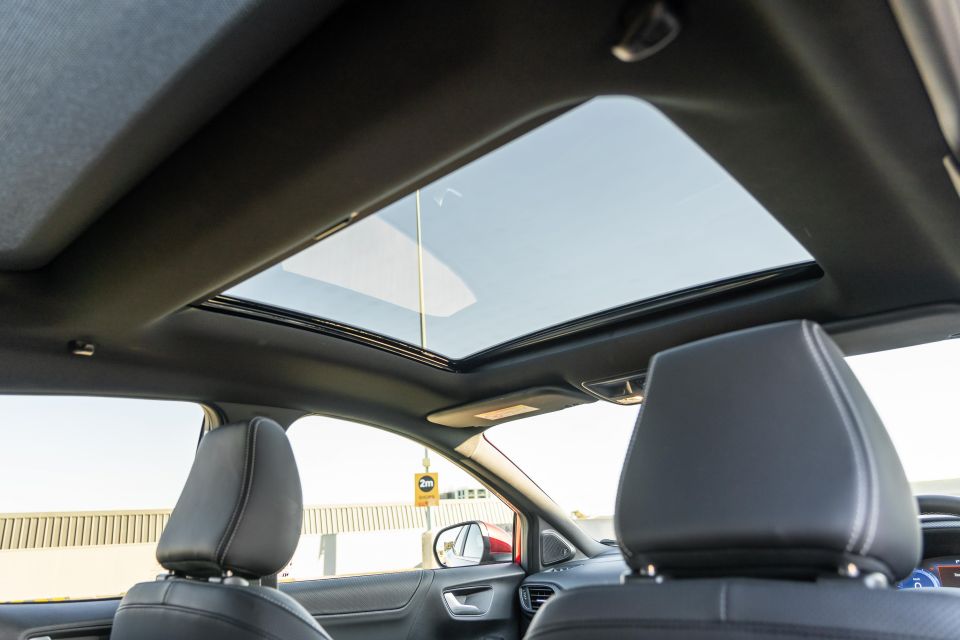
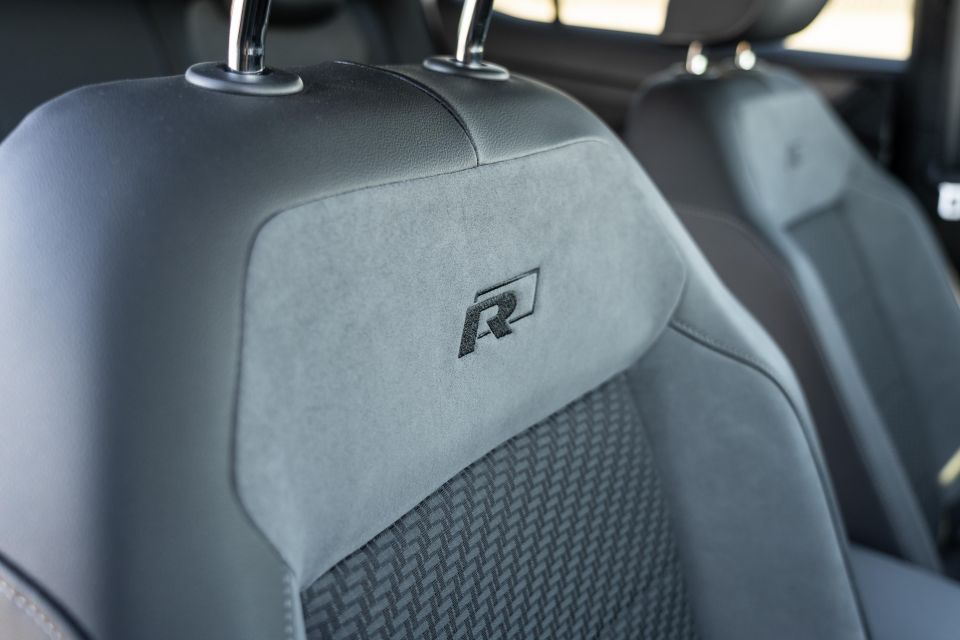
On the inside, all come with fancy seat trimming: quilted leather in the Ford, a mixture of black cloth and white leather in the Nissan, and cloth and microfibre in the Volkswagen as part of the R-Line pack.
All move manually, and in terms of functionality the Ford’s front seats have lumbar massage modes, the Nissan’s are heated, and the Volkswagen’s… do neither of these party tricks.
Each of the trio comes with climate control air-conditioning, push-button start so you can leave the key fob in your pocket, an auto-dimming rear view mirror, an 8.0-inch touchscreen, Apple CarPlay and Android Auto, and branded sound systems (B&O for the Ford, Bose for the Nissan, Beats as an option in the VW).
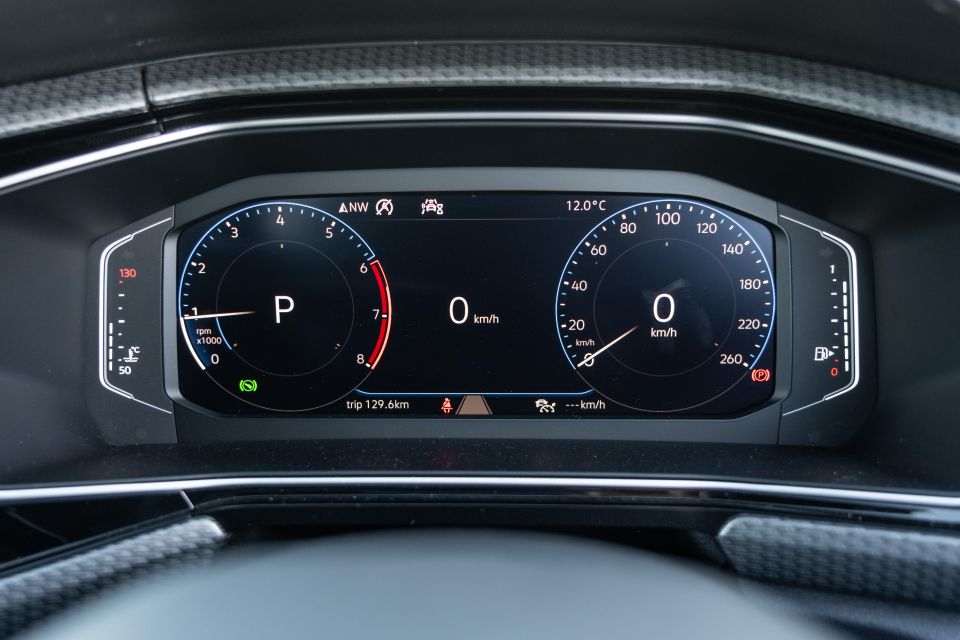
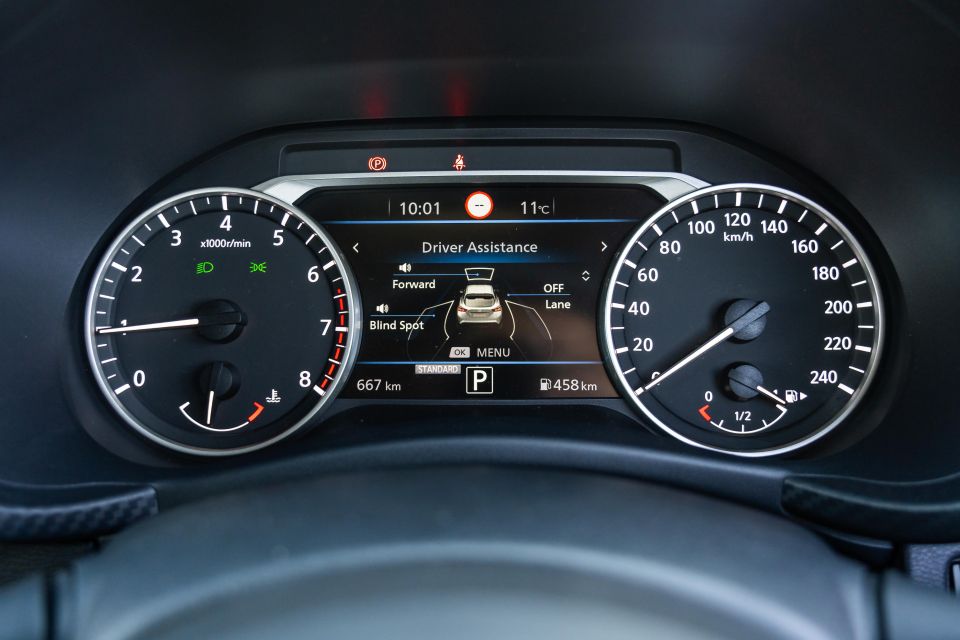
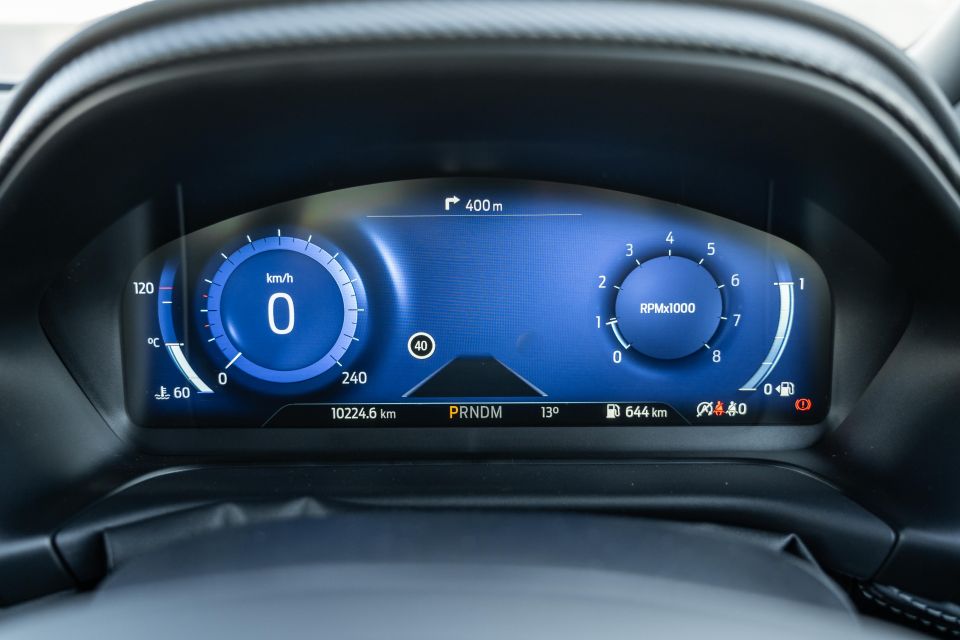
The Ford comes standard with a large 12.3-inch digital instrument cluster, the Volkswagen has a 10.25-inch unit as part of the Sound & Vision pack, and the Nissan pairs analogue gauges with a TFT digital trip computer sandwiched between.
Both the Ford and Nissan are fitted with satellite-navigation and traffic monitoring as standard, while the Volkswagen only offers sat-nav as part of the fitted Sound & Vision pack though gets wireless smartphone mirroring for MY21. The VW is also the only car to forgo DAB+, while the Nissan alone misses out on a wireless phone charger.
In essence, once you’ve fitted the R-Line design package and Sound & Vision interior tech packages to the otherwise cheaper Volkswagen, this trio are quite similarly equipped. I doubt this is an area full of deal-breakers…
| Ford Puma ST-Line V | Nissan Juke ST-L+ | VW T-Cross 85TSI Style | |
|---|---|---|---|
| Seat trim | Leather accented | Cloth and leather accents | Cloth and suede fitted option |
| Seat movement | Manual | Manual | Manual |
| Front seat functions | Lumbar massage | Heated bases | Nil |
| A/C type | Climate control | Climate control | Climate control |
| Button start | Standard | Standard | Standard |
| Auto-dimming mirror | Standard | Standard | Standard |
| Instrument cluster | Digital | Analogue gauges | Digital fitted option |
| Touchscreen | 8.0-inch | 8.0-inch | 8.0-inch |
| Satellite-navigation | Standard | Standard | Fitted option |
| Apple CarPlay | Standard | Standard | Standard |
| Android Auto | Standard | Standard | Standard |
| Digital radio | Standard | Standard | No |
| Wireless charger | Standard | No | Standard |
| USB points | Two | Two | Four |
| Branded audio system | B&O | Bose | Beats |
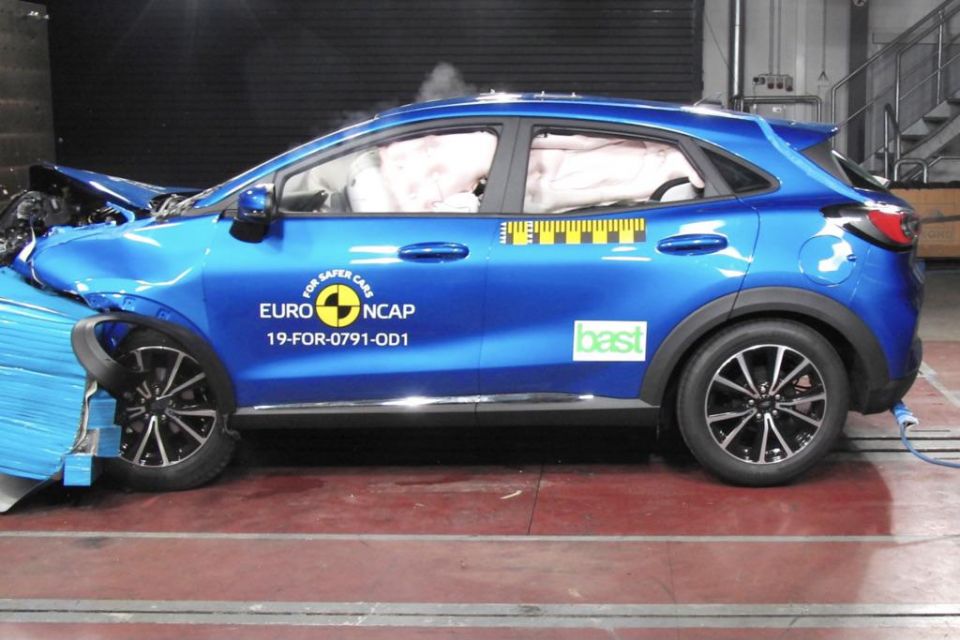
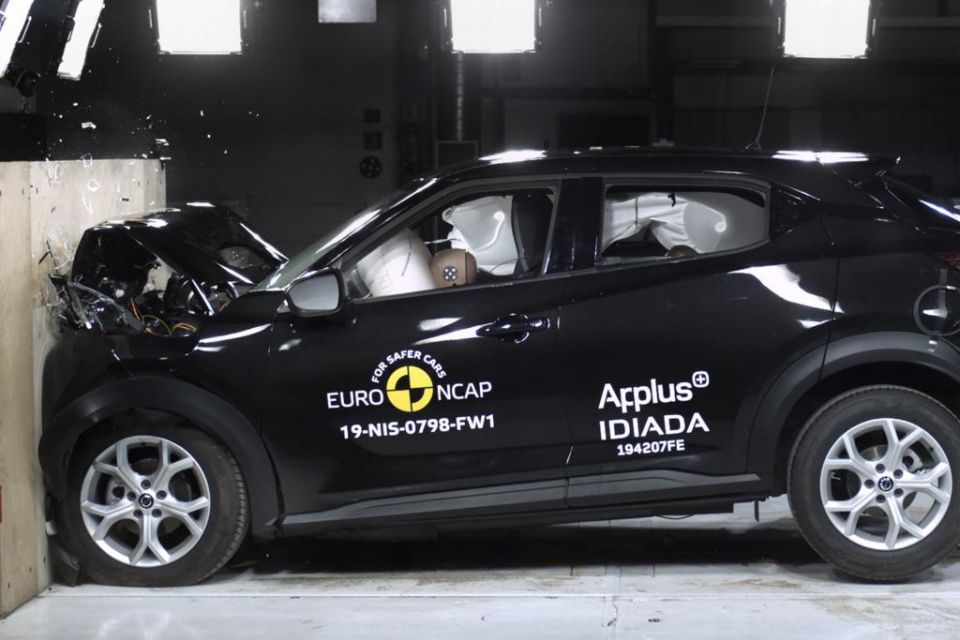
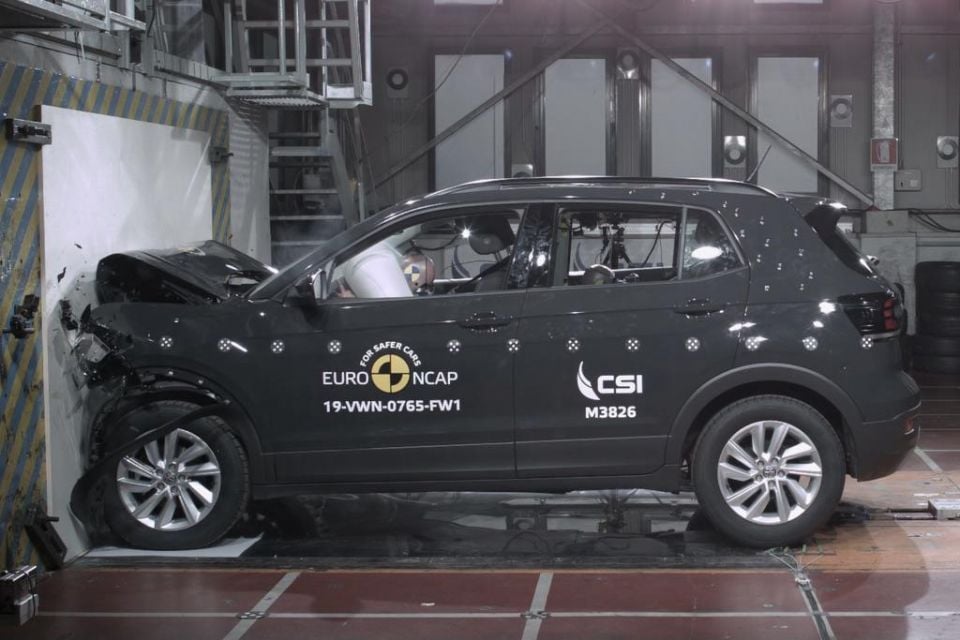
All three have the maximum five-star crash scores from independent tester ANCAP, with the same 2019 data stamps. The results were as follows:
Passive and active safety features:
| Ford Puma ST-Line V | Nissan Juke ST-L+ | VW T-Cross 85TSI Style | |
|---|---|---|---|
| Camera view | 180-degree | 360-degree | 180-degree |
| Airbags | Six | Six | Six |
| AEB – other vehicles | Standard | Standard | Standard |
| AEB – vulnerable road users | Standard | Standard | Standard |
| Lane-keeping aid | Steering | Brake force | Steering |
| Blind-spot monitor | Fitted option | Standard | Standard |
| Rear cross-traffic alert | Fitted option | Standard | Standard |
| Active cruise control | Fitted option | Standard | Standard |
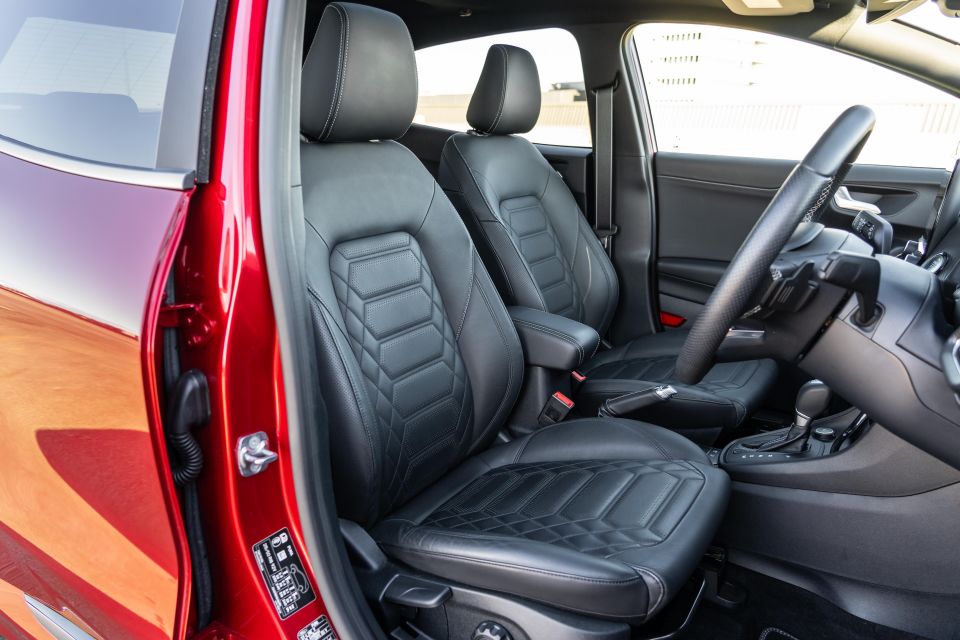
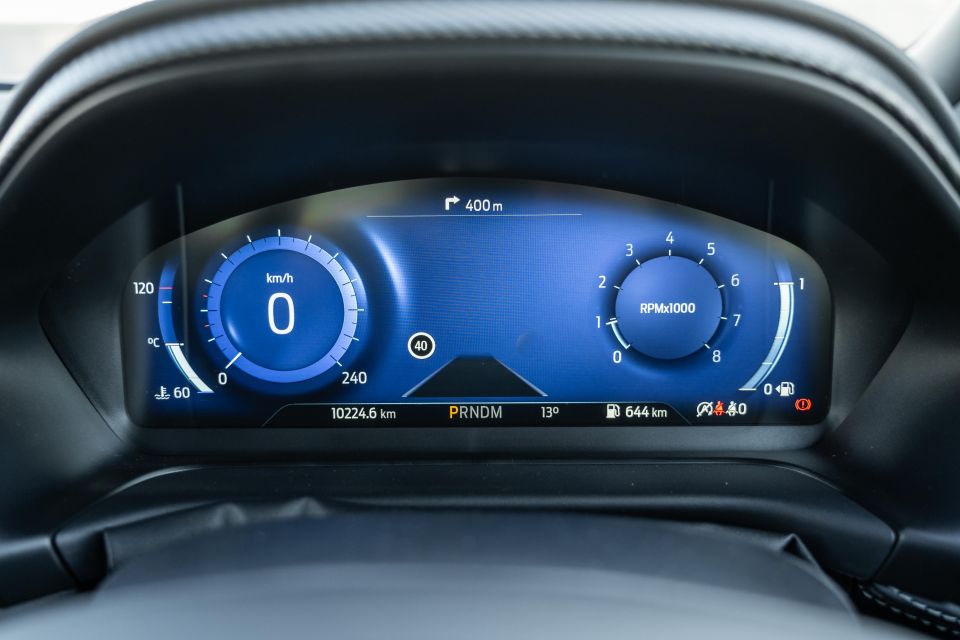
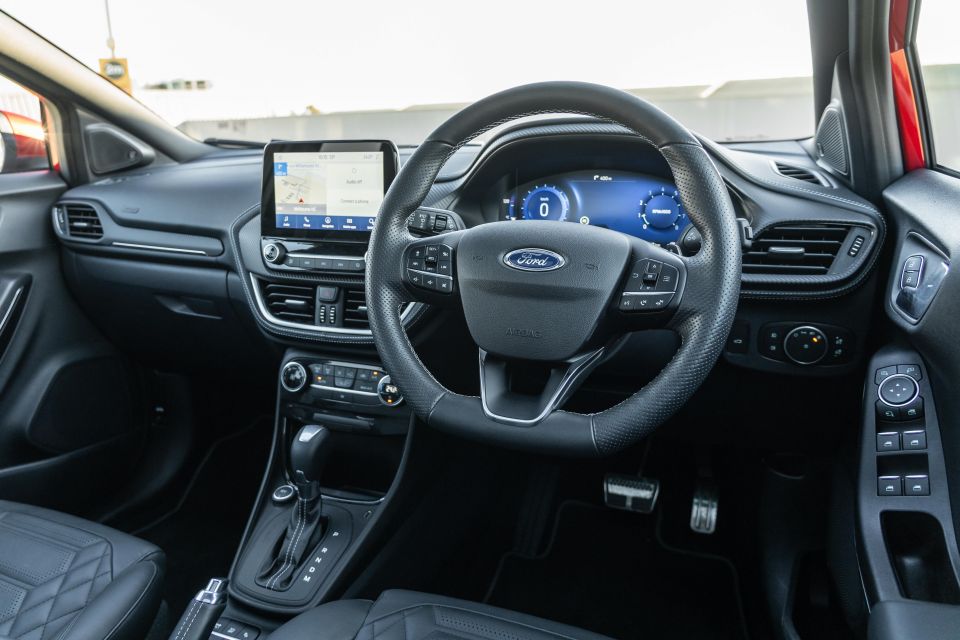
Ford:
You’re greeted by supportive leather bucket seats with lumbar movement, plus a flash digital instrument display behind the perforated leather steering wheel with paddles, that changes colours when you change the driving mode.
I do wonder how future-proof it is, though, especially given it doesn’t have the best processing power in the world…
Ford has gone to some effort to sex up the flagship grade’s cabin, by offering the optional panoramic glass roof, soft touch points, classy contrasting stitch work, and faux carbon-fibre trim accents.

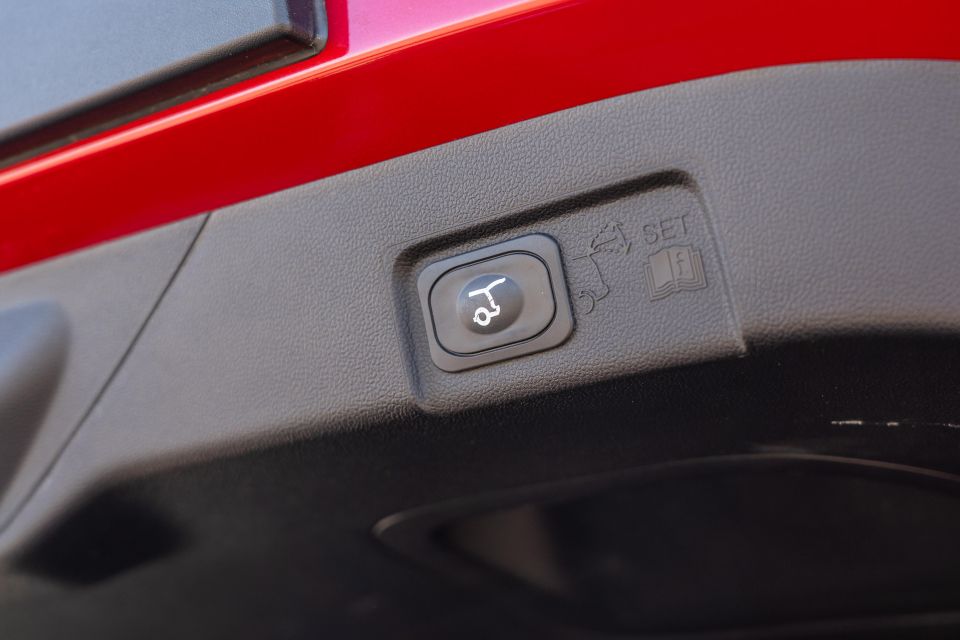
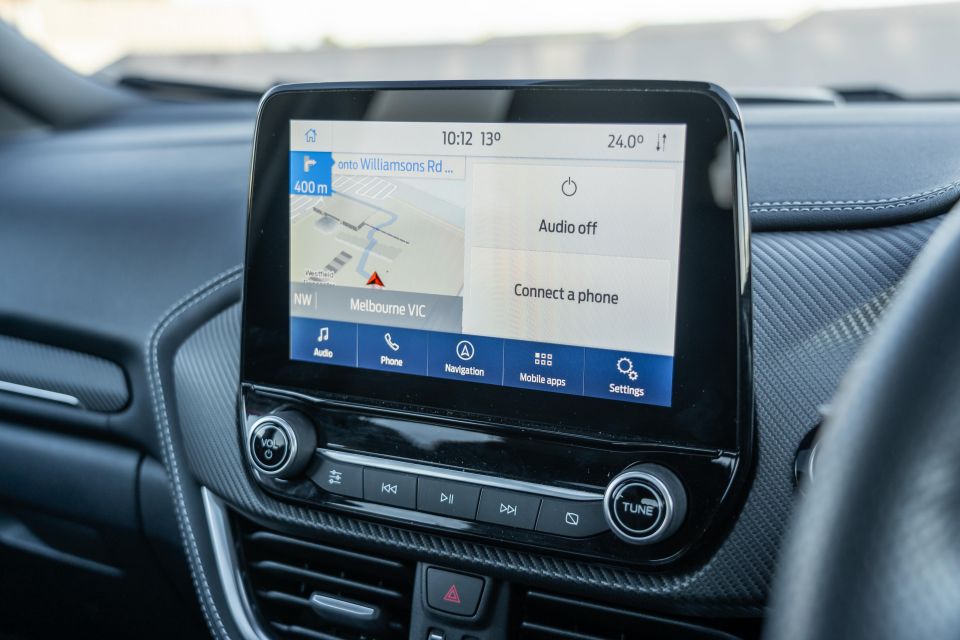
Some of the trims used lower down the dash and tunnel aren’t as primo, but everything seems put-together well enough.
The high-mounted touchscreen runs Ford’s latest ‘Sync’ system with DAB, logical maps, phone mirroring, and an embedded modem that lets you check on your car via an app.
There’s also a wireless charging pad and a pumping B&O sound system. It’s as ergonomically simple as infotainment gets.
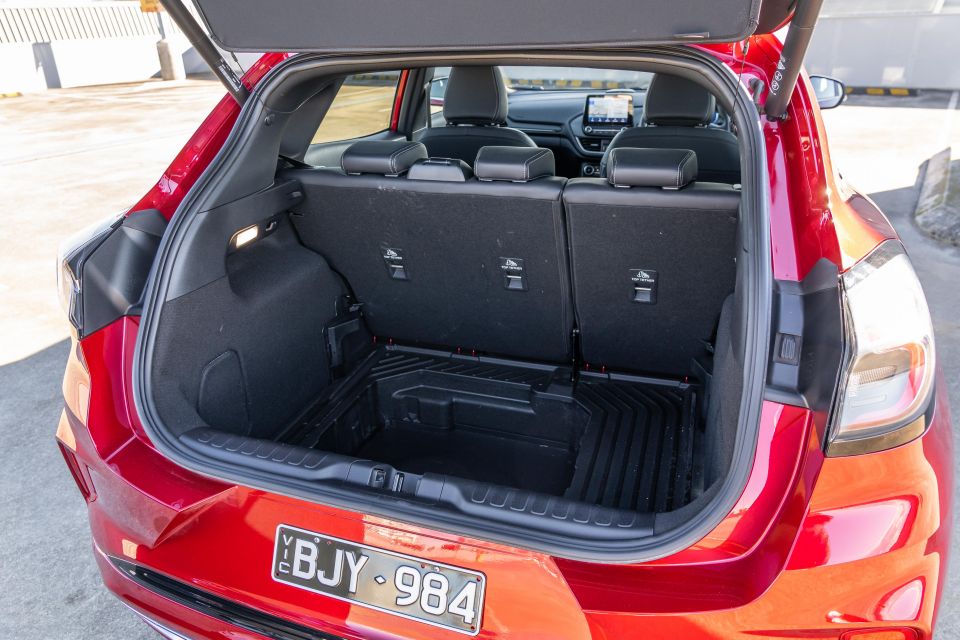
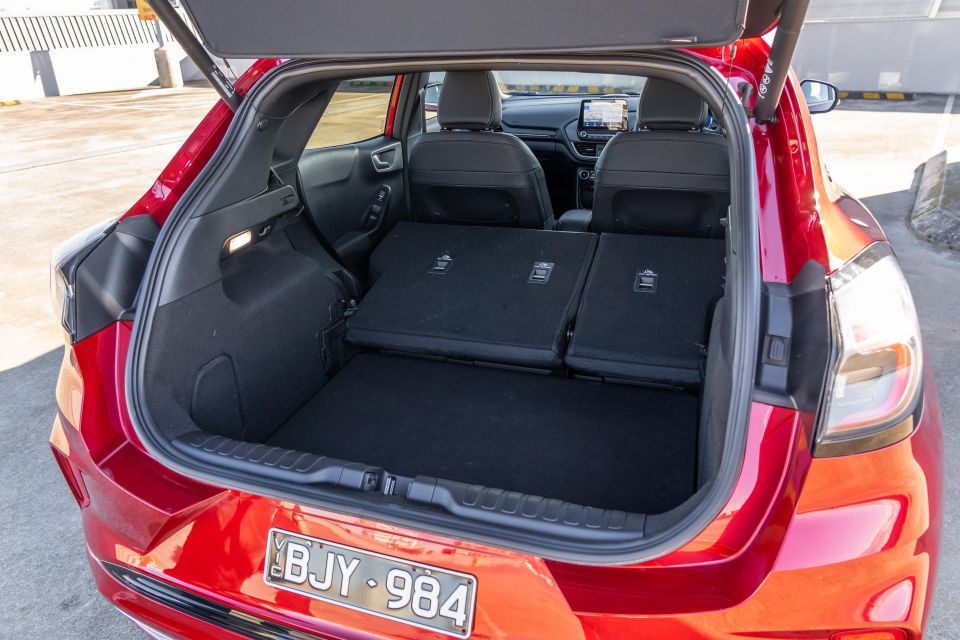
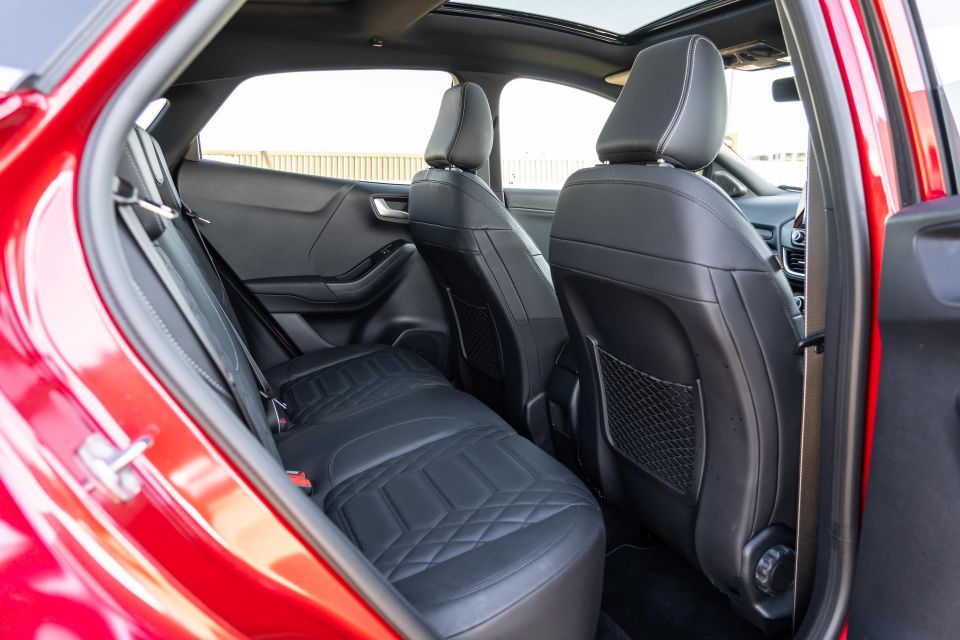
The back seats are quite light on amenities (no vents or USBs), and legroom/toe room is quite tight, more so than in the other two. Removing the sunroof option would definitely improve head room.
The back row is best reserved for kids or patient adults.
The boot is quite large however, at 410 litres. It’s accessed by the only power tailgate on test, has a two-tier loading floor, a 12V socket, and a handy plastic tub beneath. There’s also a space-saver spare wheel.
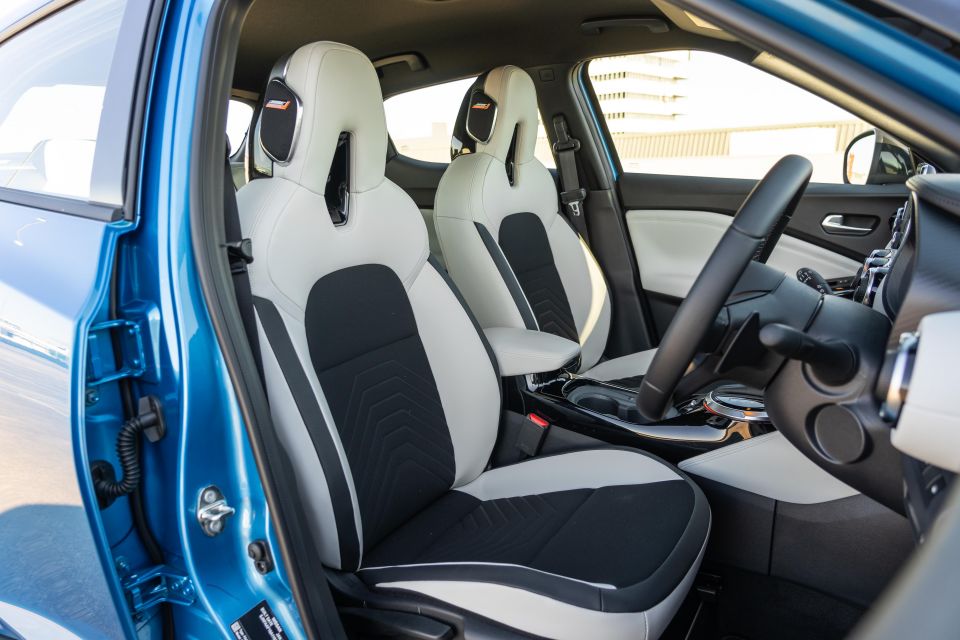
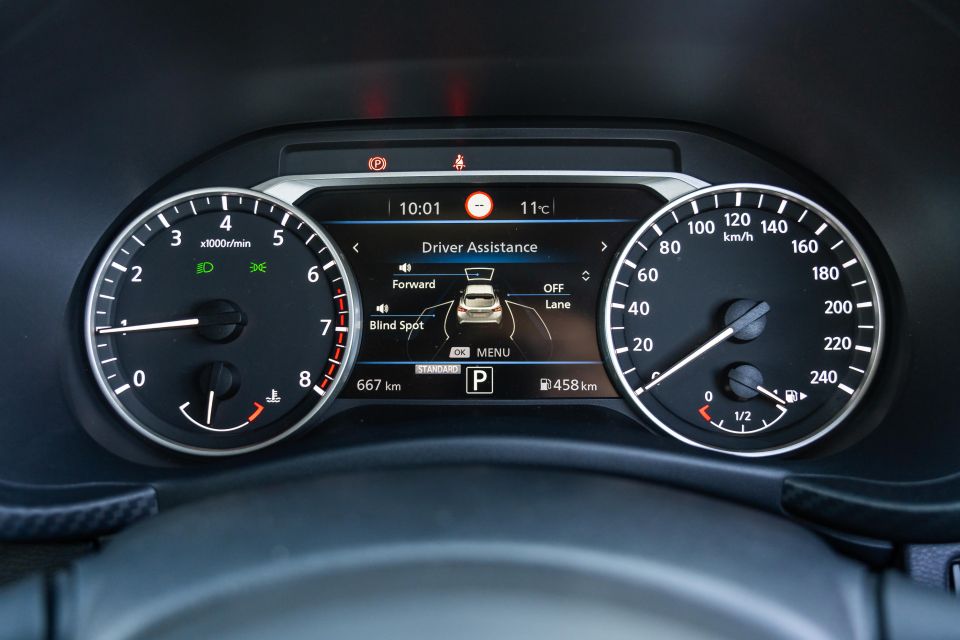
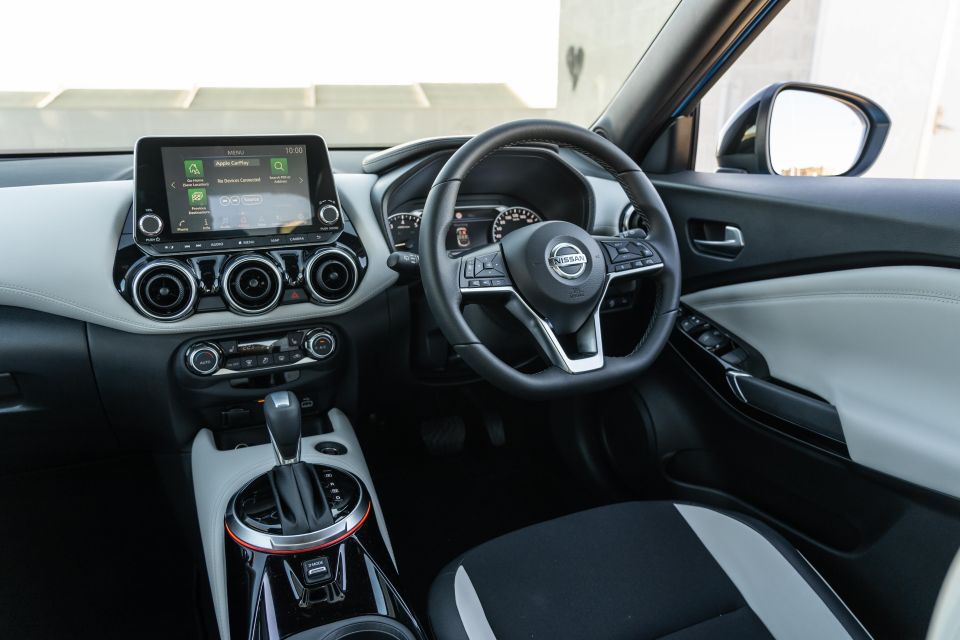
Where expert car reviews meet expert car buying – CarExpert gives you trusted advice, personalised service and real savings on your next new car.
Nissan:
It’s quite clear the company has made some effort to add a premium veneer to the Juke’s cabin.
There’s soft white leather-like door, dash, and transmission tunnel trims; an electric parking brake; ambient light piping; clickety-clackity spinning round vents; and shapely bucket seats with Bose speakers in the integrated headrests that give an involving sound.
On the other hand the steering wheel isn’t particularly nice in the hand, and there are too many shiny piano black pieces for my liking – they are magnets for dust, sun reflections and scuffs.
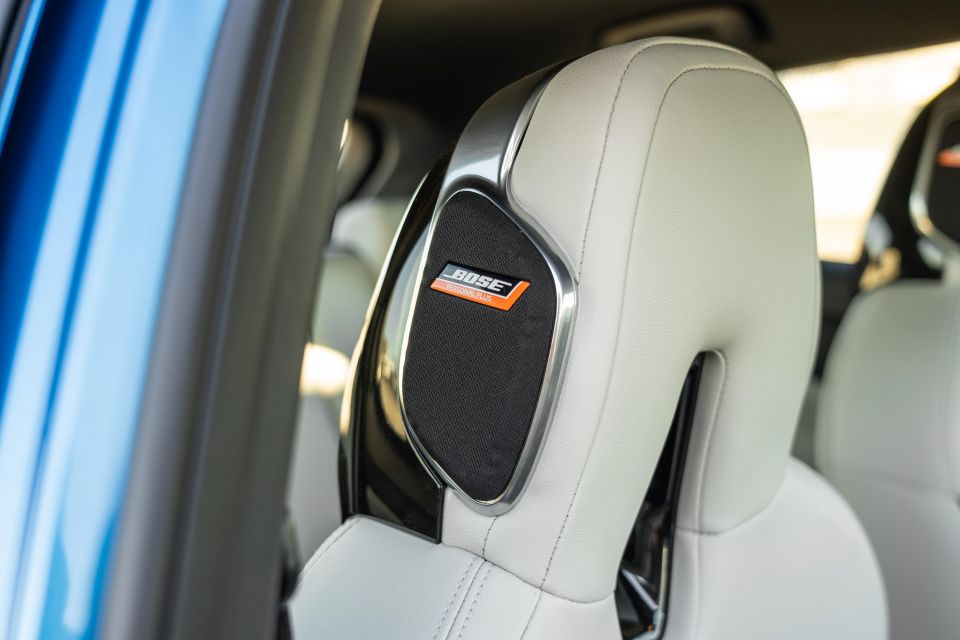
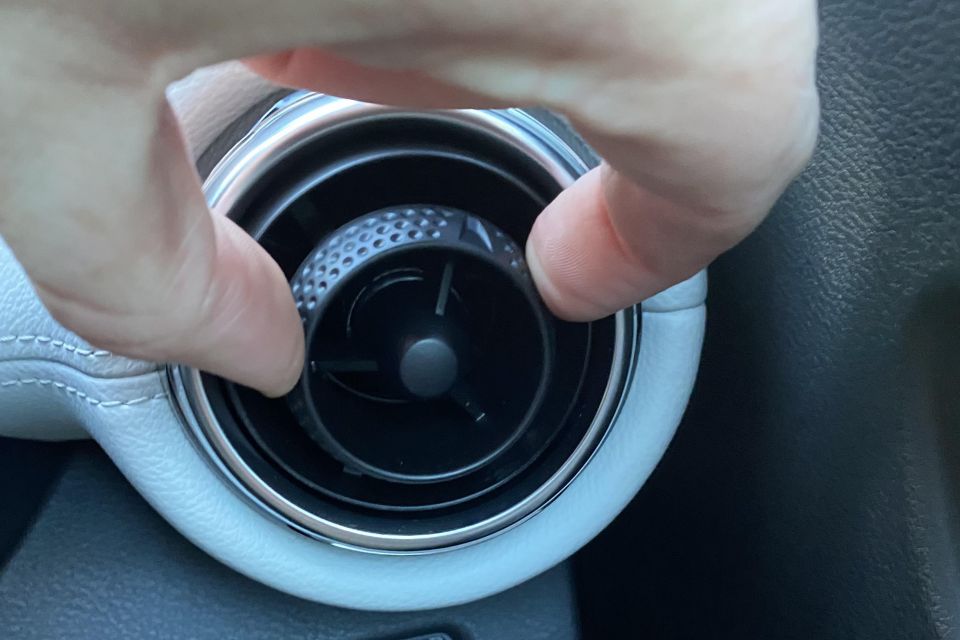
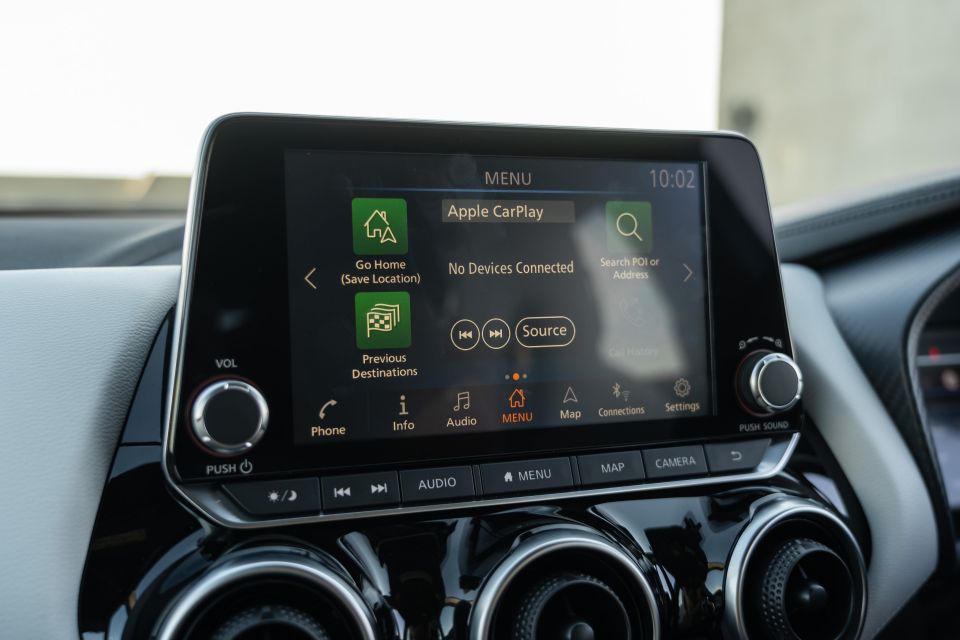
The instruments are not fully digital, but the analogue gauges that flank a TFT trip computer are quite legible and there’s still a digital speedometer. I think this array might just age more gracefully.
The infotainment system has button shortcuts, and offers the expected digital radio, phone mirroring, and proprietary navigation.
It’s also the only car here with an overhead-view camera, albeit one with pretty fizzy resolution.
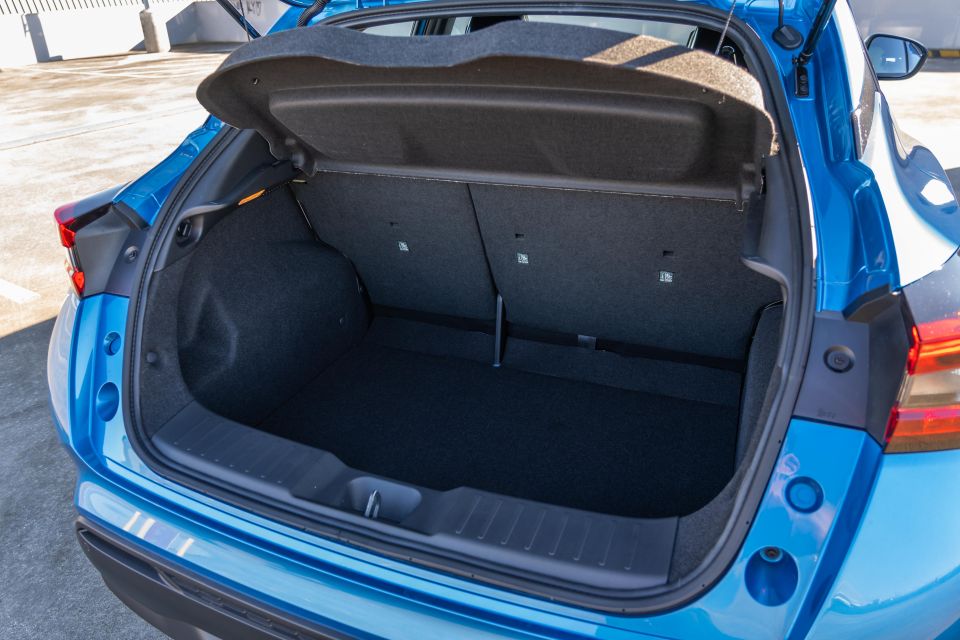
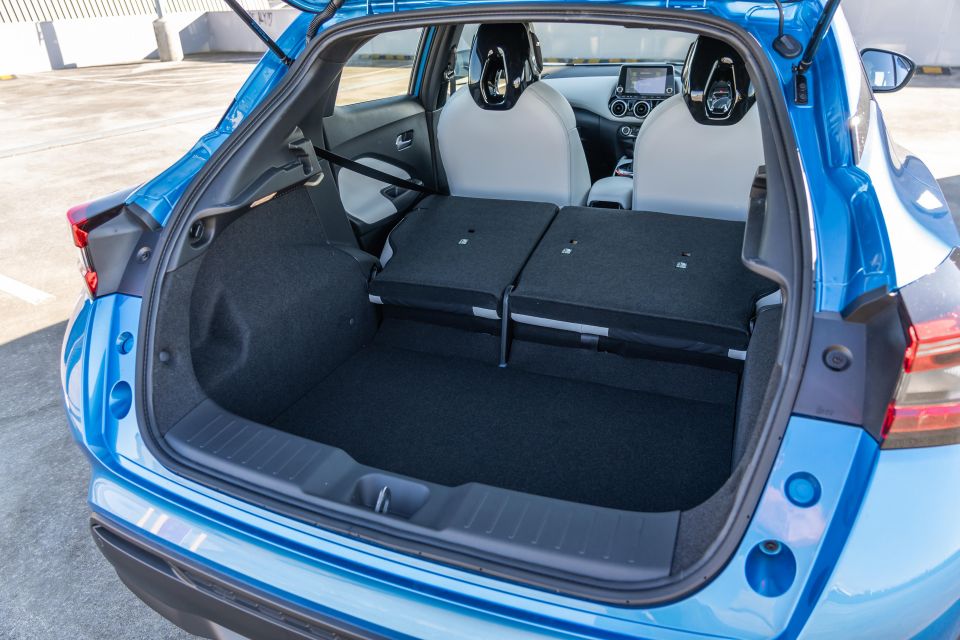

The back seats come with nice grab handles and a single USB.
Knee room and headroom is better than the Ford but worse than the VW, and the side windows are quite small. I’m 194cm and could squeeze in. Just.
The deep boot is a capacious 422L which is to be commended, and there’s a temporary spare wheel beneath the loading floor.
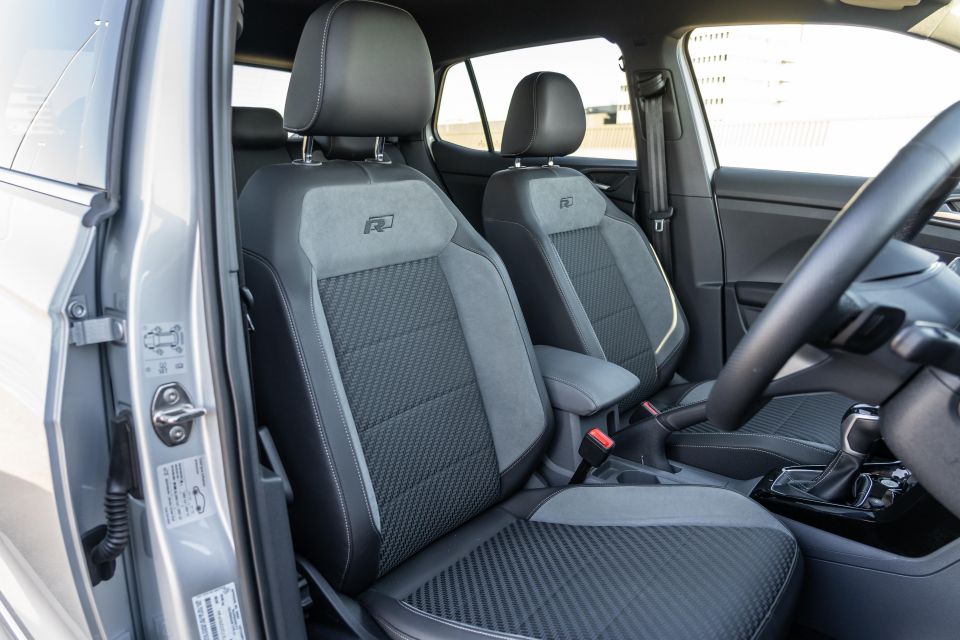
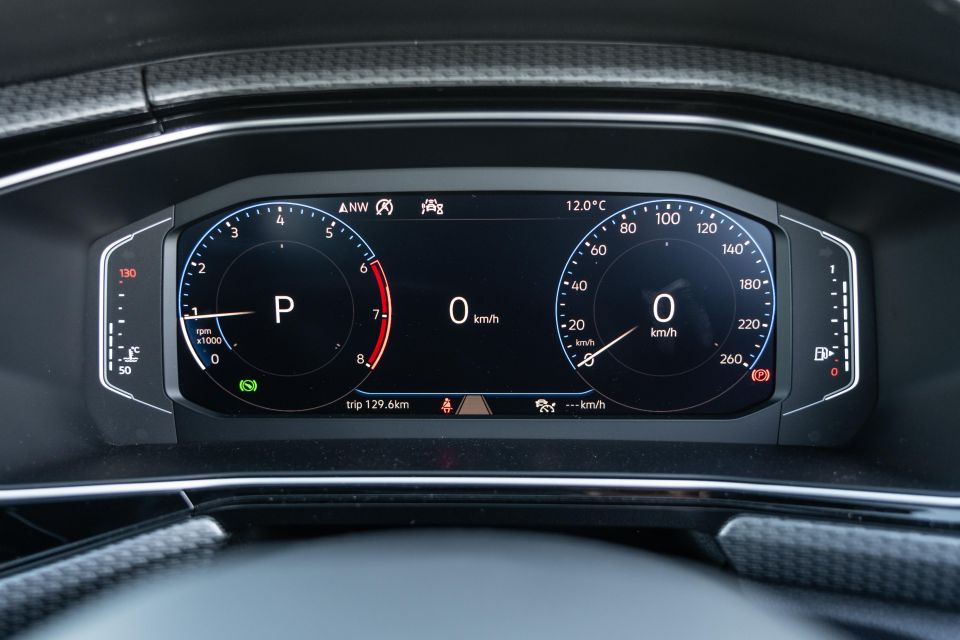
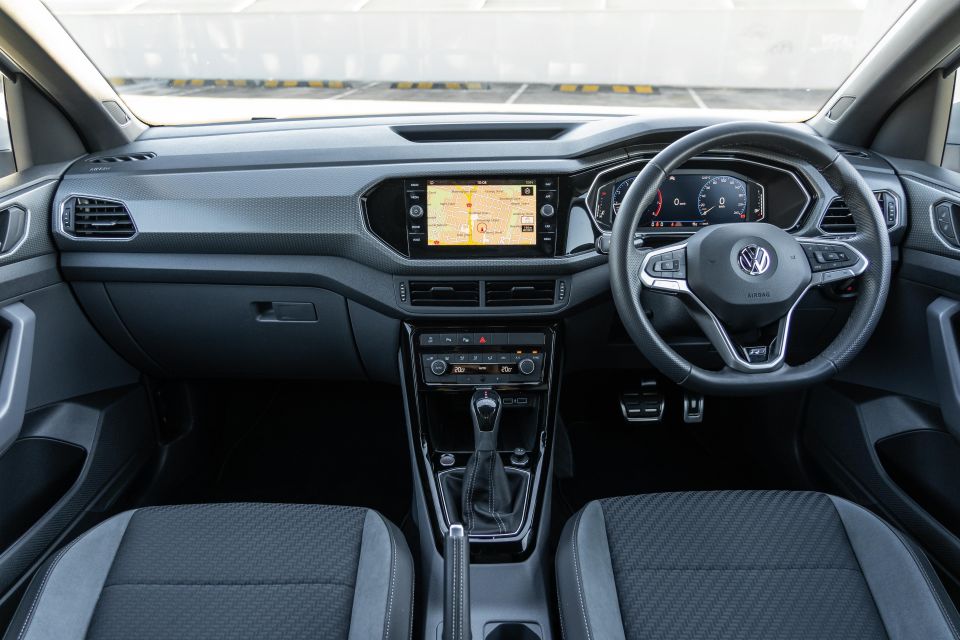
Volkswagen:
The T-Cross’s seats don’t have the greatest degree of side bolstering, but the look the part with the combination of checkered cloth and microfibre with ‘R’ branding.
The wheel has VW’s newest button design, and is wrapped in perforated leather. It’s worth noting our MY20 test car gets a slightly older wheel hub and logo compared to the MY21. The optional digital instruments show maps, which is a great feature, though again like the Ford’s I do wonder how it’ll date.
Small touches like the checker-pattern door and dash inlays and the silver handles are quite nice, and the build quality is beyond reproach.


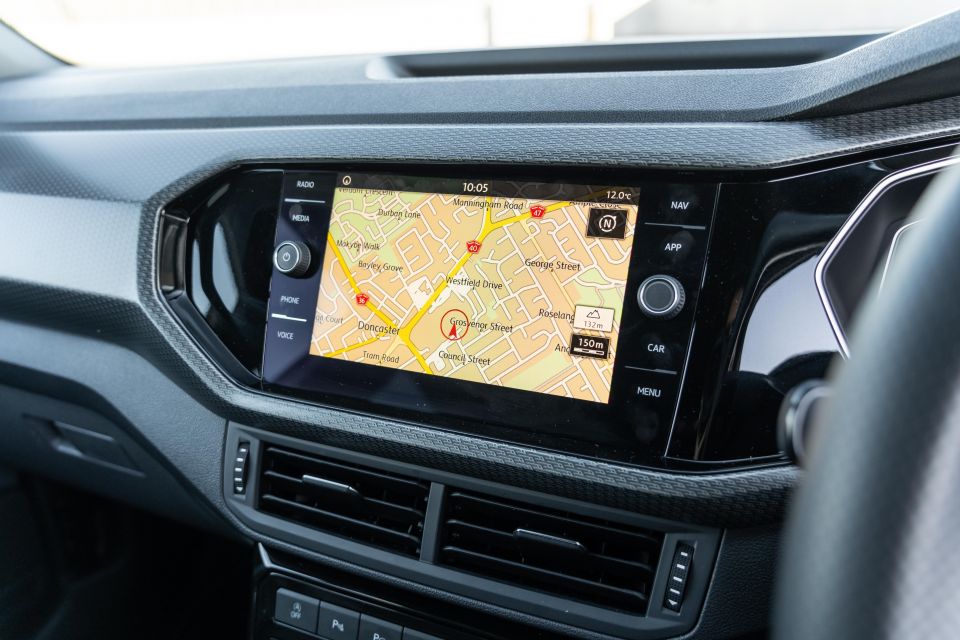
But there are also more hard plastics in here than the other two and like the Nissan a reliance on piano black. VW’s new cabins lack the tactility of older models.
Where the T-Cross really shines is storage: a sliding draw below the seats, a big cubby below the fascia, a dash-top open section, and deep door bins make it eminently practical.
The infotainment screen fitted to our test car works much like a phone, in terms of how you use your fingers to swipe, pinch and zoom. This optional incarnation also brings wireless phone mirroring for those not enamoured of cables.

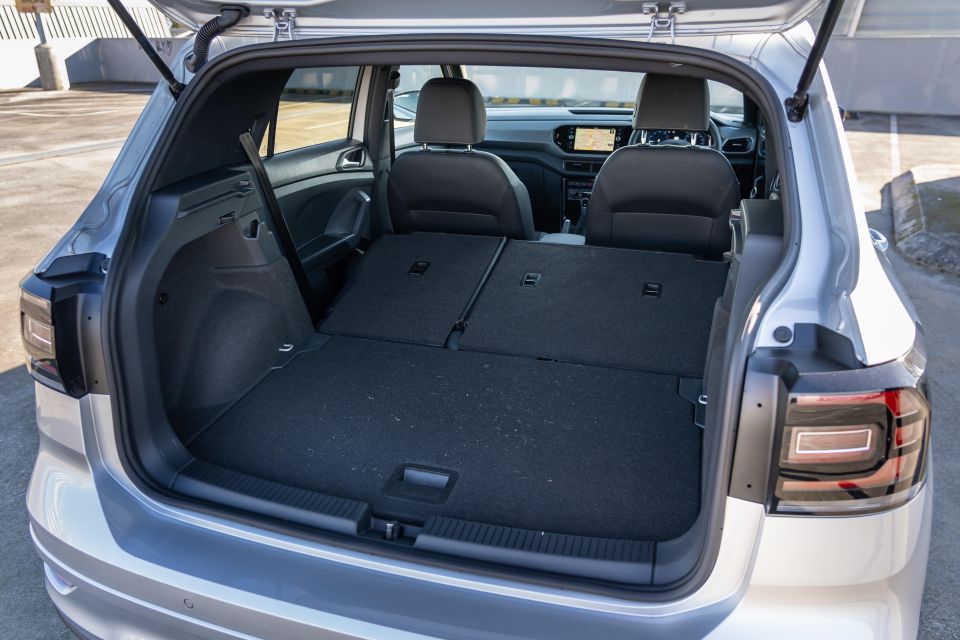
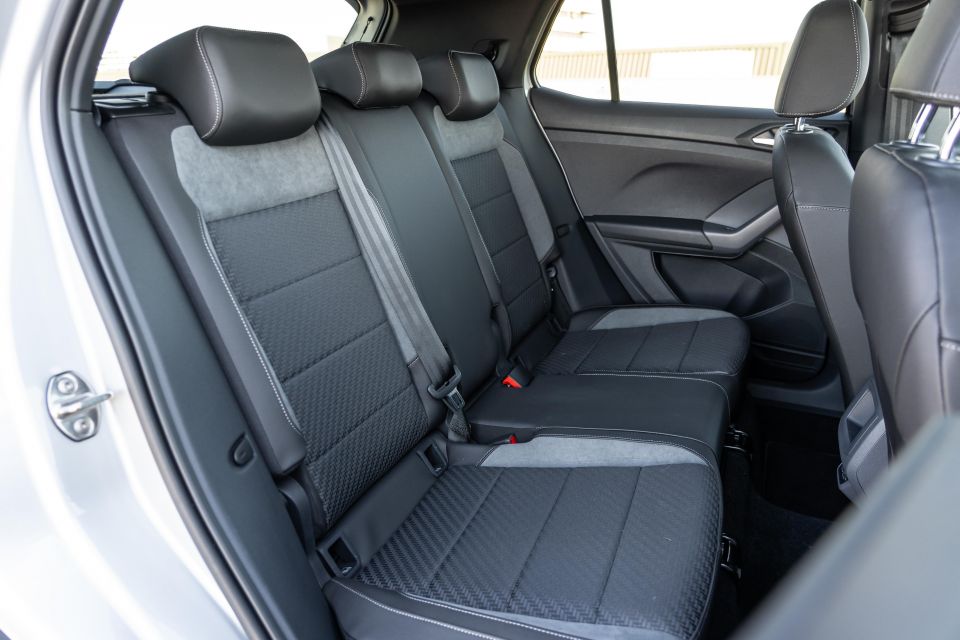
Our test car was built before a recent running MY21 change, but the T-Cross now comes with a Qi charging pad and USB-C points rather than USB-As, to go with the updated infotainment system with wireless Apple CarPlay/Android Auto.
As the boxy design and big side windows suggest, the back seats offer the most headroom and easiest outward visibility., Amenities include coat hook, USB-Cs (USB-A for MY21), and grab handles. I found the back seats far the most spacious and comfortable here, and the back bench even slides forward to up the cargo space.
The boot stores a minimum of 385L, up to 455L with that bench moved forward, and there’s a space-saver spare below the floor.
| Ford Puma ST-Line V | Nissan Juke ST-L+ | VW T-Cross 85TSI Style | |
|---|---|---|---|
| Length | 4207mm | 4210mm | 4108mm |
| Width | 1805mm | 1800mm | 1760mm |
| Height | 1548mm | 1595mm | 1583mm |
| Wheelbase | 2598mm | 2636mm | 2563mm |
| Clearance | 164mm | 172mm | 185mm |
| Boot space | 410L | 422L | 385L – 455L |

This trio use very similar drivetrains. In fact they’re even closer than that.
All have fuel-sipping 1.0-litre three-cylinder engines using turbochargers to maximise outputs, front-wheel drive, and seven-speed dual-clutch-type automatic transmissions.
Seriously, on paper they could just share an engine and be scarcely different, though as I’ll explain the tuning of each makes a difference.

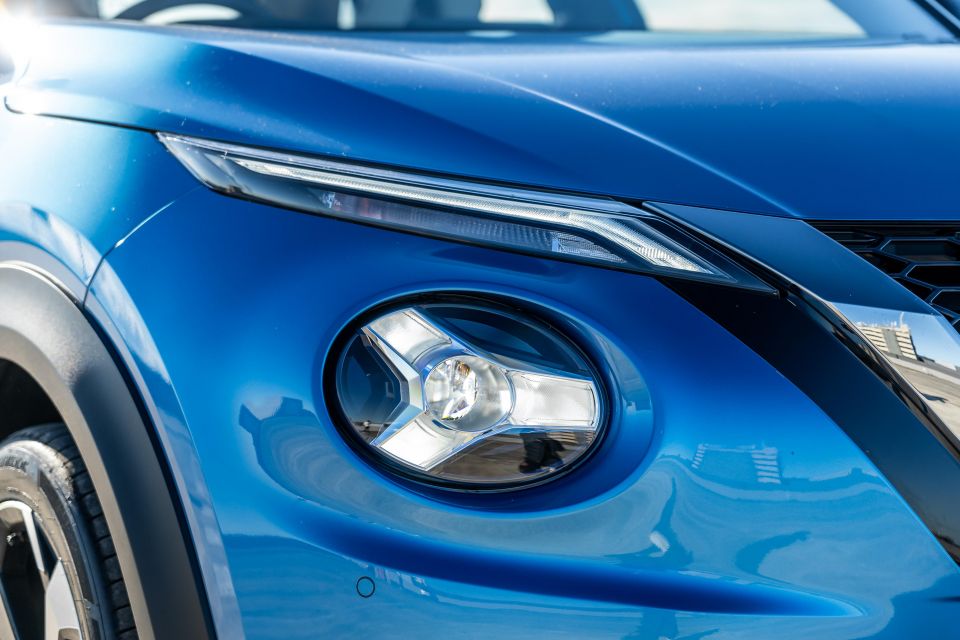
The Ford’s engine makes the power power but least torque at 92kW and 170Nm respectively. The Nissan’s makes 84kW and 180Nm, and the Volkswagen’s 85kW and a comparatively muscular 200Nm.
It’s also worth factoring in the respective vehicle tare weights: the Ford weighs 1267kg, the Nissan 1225kg, and the Volkswagen 1240kg.
Fuel consumption is also scarcely different: 5.3L/100km for the Ford, 5.4L/100km for the VW, and 5.8L/100km for the Nissan.
| Ford Puma ST-Line V | Nissan Juke ST-L+ | VW T-Cross 85TSI Style | |
|---|---|---|---|
| Engine | 1.0-litre three-cylinder turbo | 1.0-litre three-cylinder turbo | 1.0-litre three-cylinder turbo |
| Power | 92kW @ 6000rpm | 84kW @ 5250rpm | 85kW @ 5500rpm |
| Torque | 170Nm @ 1500rpm | 180Nm @ 2400rpm | 200Nm @ 2000rpm |
| Fuel economy | 5.3L/100km 95 RON | 5.8L/100km 95 RON | 5.4L/100km 95 RON |
| Power-to-weight | 72.6kW per tonne | 68.6kW per tonne | 68.5kW per tonne |
| Transmission | 7-speed dual-clutch auto | 7-speed dual-clutch auto | 7-speed dual-clutch auto |
| Driven wheels | Front | Front | Front |
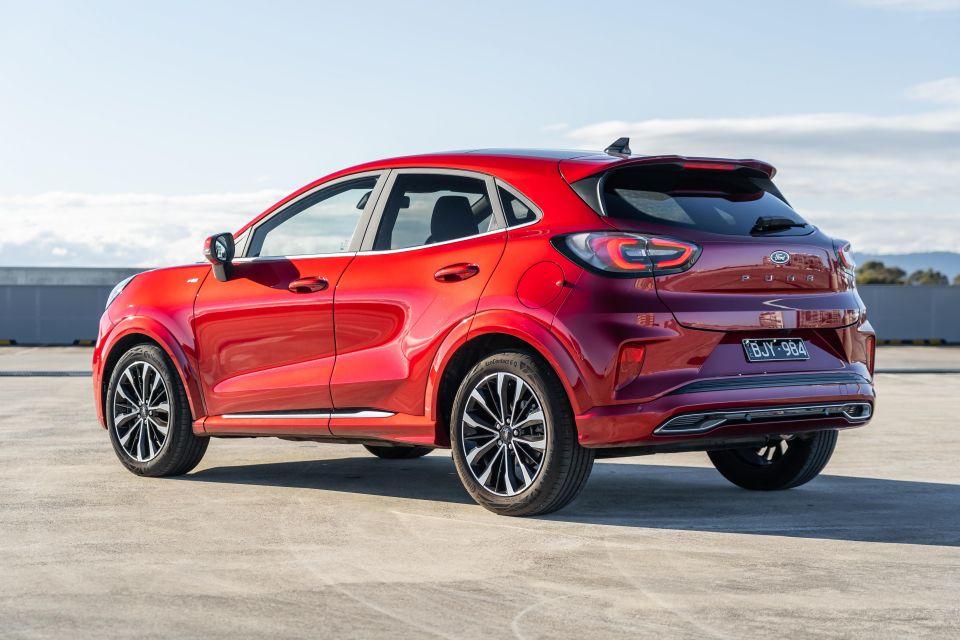
Ford:
Ford of Europe really knows how to set up a car. The chassis stiffness and steering tune make the Puma feel alive, eager, desperate for corners to tuck into.
It’s terrific fun with excellent body control against cornering forces, always ready to offer the driver feedback and remain light on its proverbial feet.
Europe gets a Puma ST performance variant and it’s easy to see why… This thing handles like a Fiesta, with bonus kerb-hopping ground clearance.
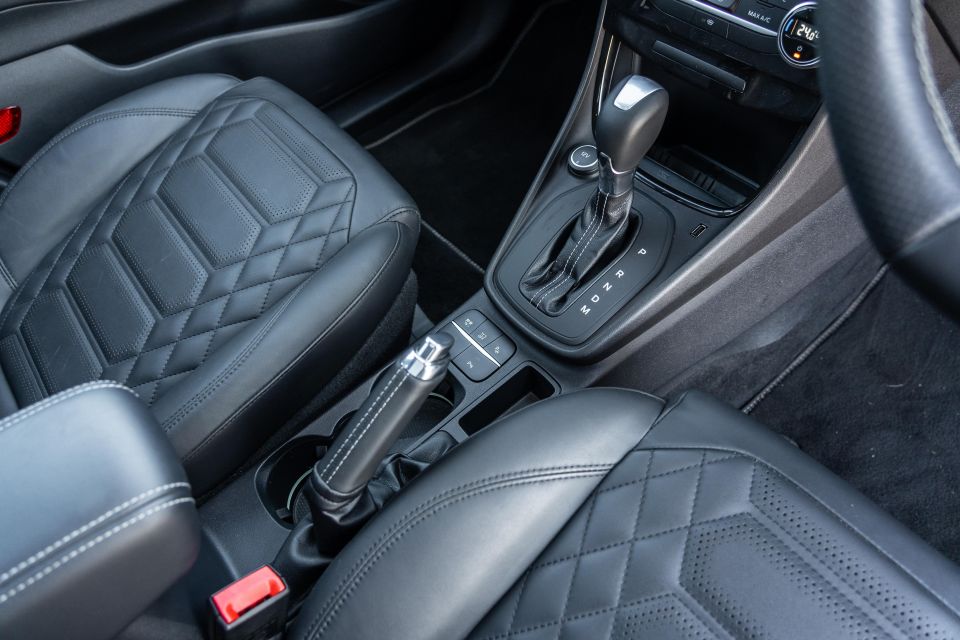
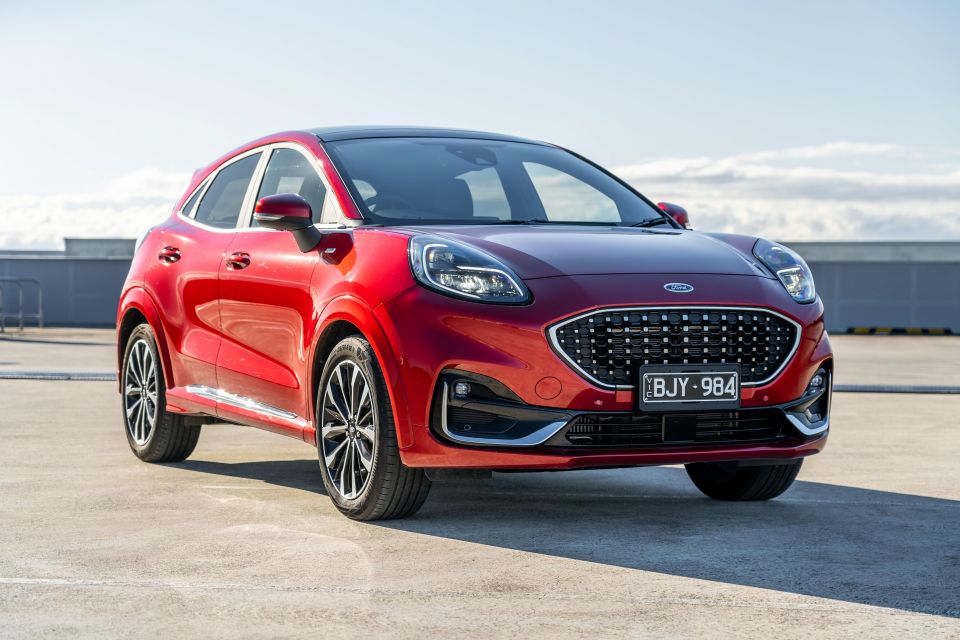
The engine is also the best here in my opinion, with the most characterful sound and sharpest throttle response. Plus there are a plethora of driving modes to cycle through that change the throttle mapping and transmission shift patterns to suit eco or sporty driving.
The gearbox is best on the move, with crisp and snappy shifts that suit the car’s character and paddle shifters to boot. At low speeds there are typical hints of ‘jerkiness’ if you don’t carefully modulate your throttle inputs.
If there’s a downside it might be the ride quality. It’s middle of the road in terms of comfort, with its chassis and tyre tune clearly aimed at offering sportiness. It won’t rattle out your fillings but it isn’t plush, either…
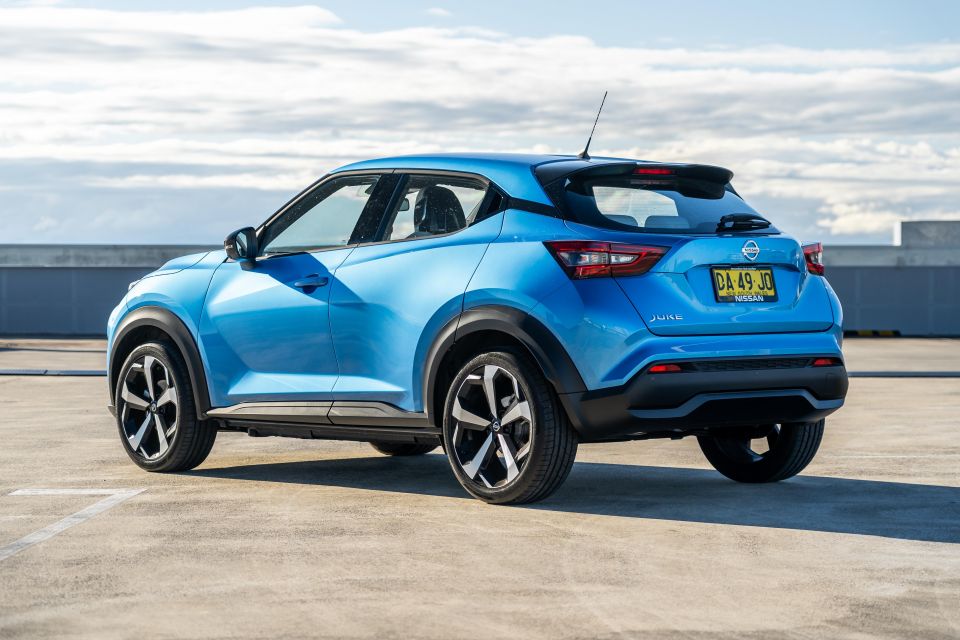
Nissan:
The Nissan’s steering feels weightier than the Ford’s, and the car feels heavier and more planted, which might suit your vibe.
But it’s still quite an agile handler, with plenty of stiffness and quick directional changes next to the bigger and bulkier Qashqai and X-Trail.
The ride quality falls victim to those huge alloys and slim-sidewall tyres a bit, with occupants not so isolated from sharp inputs into the cabin from expansion joints and potholes. It’s a little jarring.

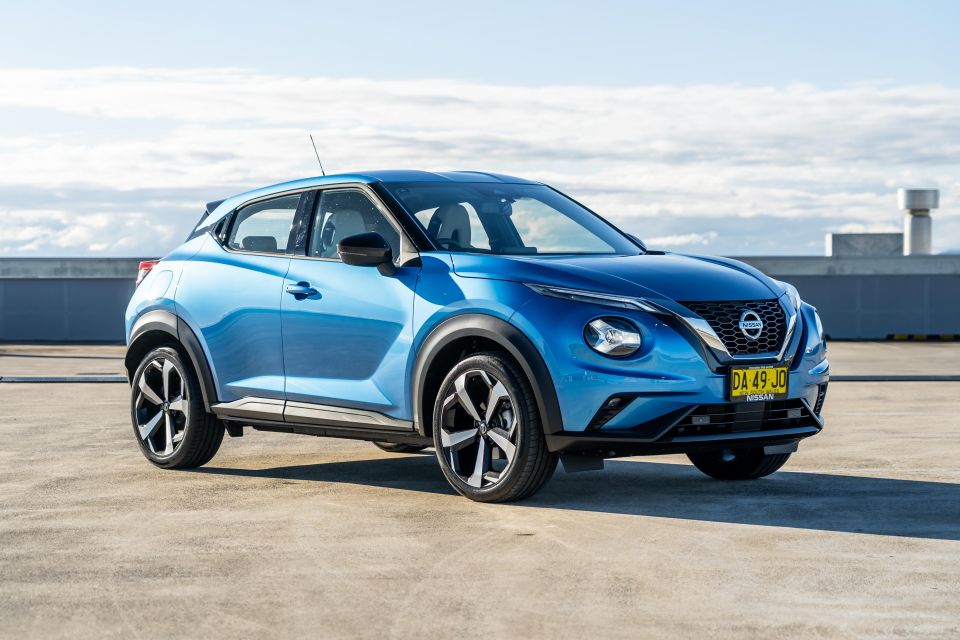
The engine has the signature of all small turbos, namely tons of low-end torque that offers ample rolling response. All these cars’ engines bely their motorbike-like displacements.
Despite a recent software tune, the dual-clutch transmission is still a little less decisive at low speeds than the other pair, and the cumulative effect of minor turbo lag, a DCT, and stop/start can make getaways more protracted than is ideal.
The best bet is to tap on a rocker switch next to the transmission and select the sports driving mode, which holds low ratios longer but really sharpens up and smooths out the experience.
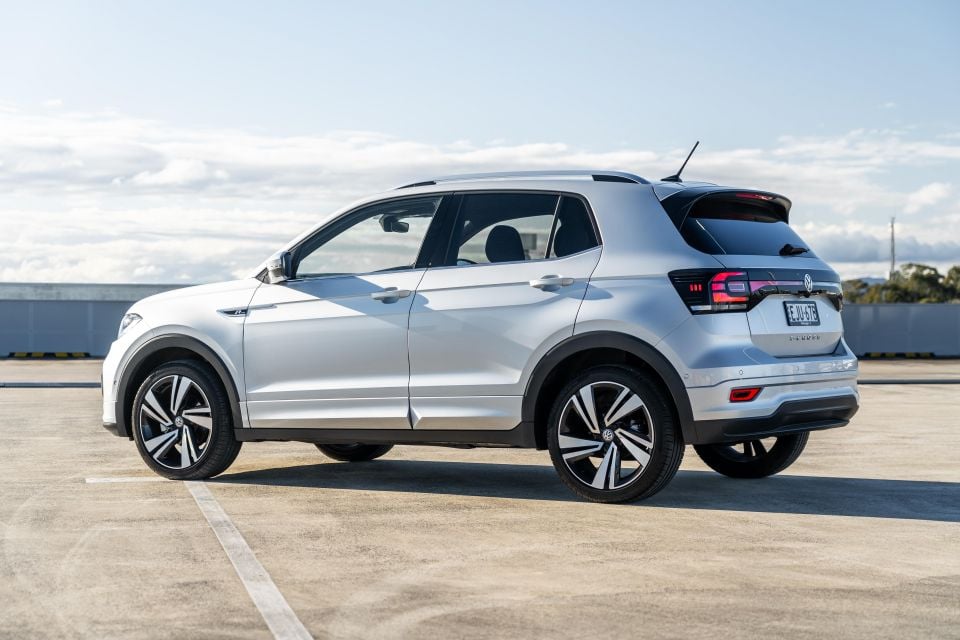
Volkswagen:
The Volkswagen is quietest here on motorways and feels the most substantial and most planted. Its big windows also offer the best outward visibility.
Dynamically the R-Line pack adds bigger wheels which don’t help the initial ride, but the suspension and damping both isolates you from inputs and settles the car’s body after hits quite nicely.
It drives much like a Polo, which is among the more mature and sophisticated little cars out there.
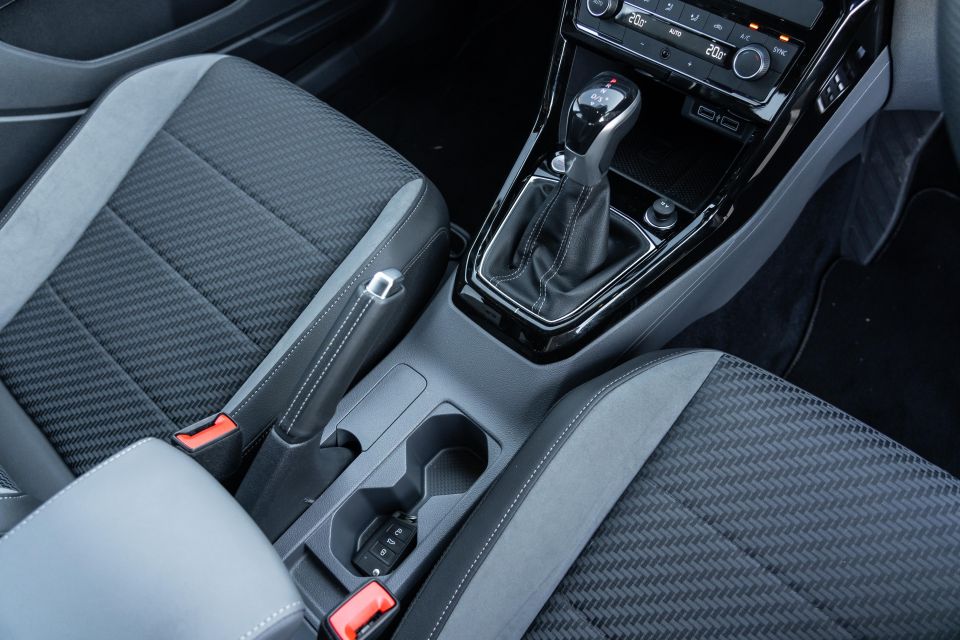

The steering is not super communicative and the handling quite benign, but for a typical comfort-focused buyer it stacks up well. It’s the most typically SUV-like car here in this (and many other senses).
Volkswagen has been doing small engines and dual-clutch (DSG) transmissions longer than anyone and it shows: the drivetrain is quite smooth and refined even at low speeds in urban driving, and feels the most like a conventional torque-converter-type auto.
The engine is also very refined and offers nearly as much urgency as the Ford, and a handy extra dose of torque – meaning it feels the least like a tiny 1.0-litre triple on test.
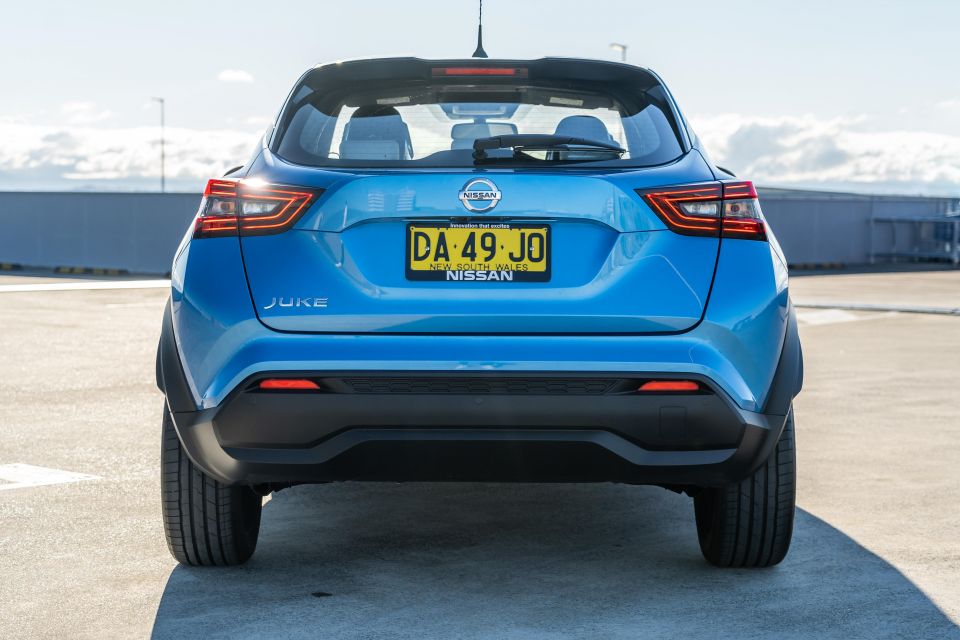
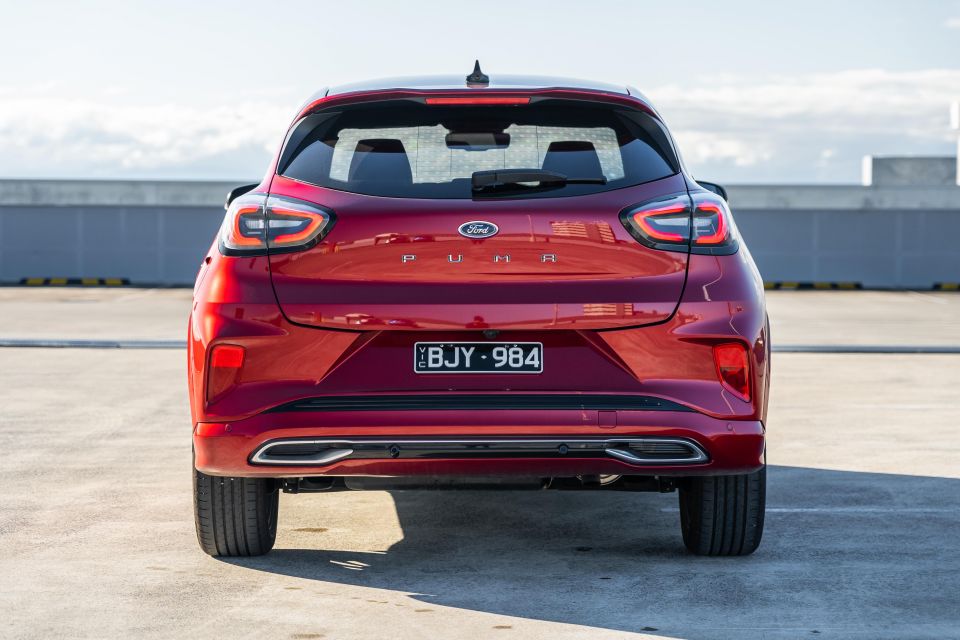
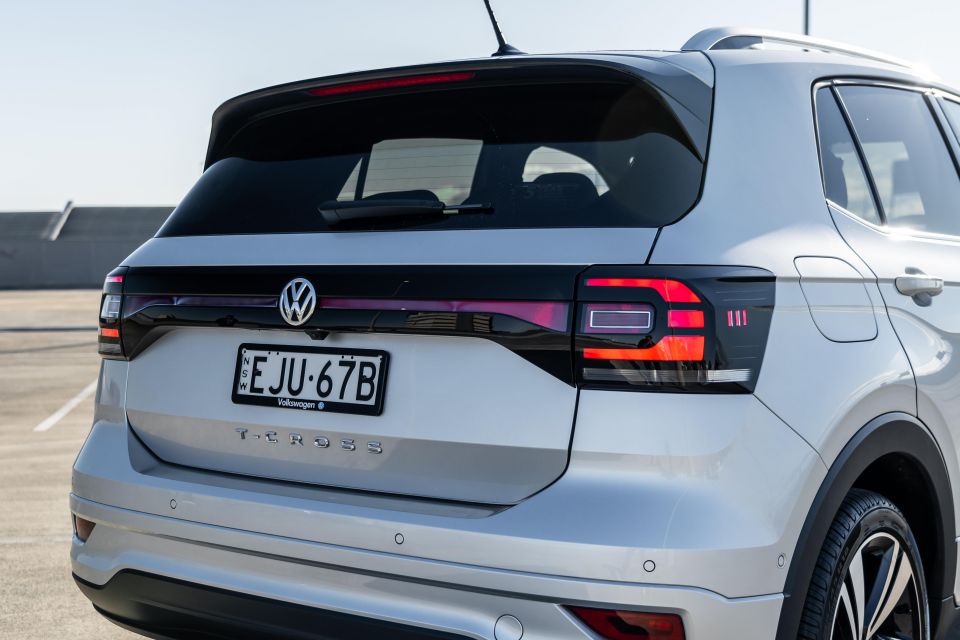
Each of the brands here offers a five-year and unlimited kilometre warranty. Servicing costs at a dealer, and required intervals, are as follows:
Ford Puma: Every 12 months or 15,000km. Prices for first five visits are $299, $299, $299, $299, $320. Total for five years = $1516.
Nissan Juke: Every 12 months or 20,000km. Prices for first five visits are $321, $479, $538, $498, $347 = $2183.
Volkswagen T-Cross: Every 12 months or 15,000km. Prices for first five visits are $339, $532, $457, $852, $457 = $2637.
In a bid to keep you returning to a dealer, Volkswagen offers a five-year ‘Care Plan’ for $1850 upfront, saving you $787 off paying per-visit.
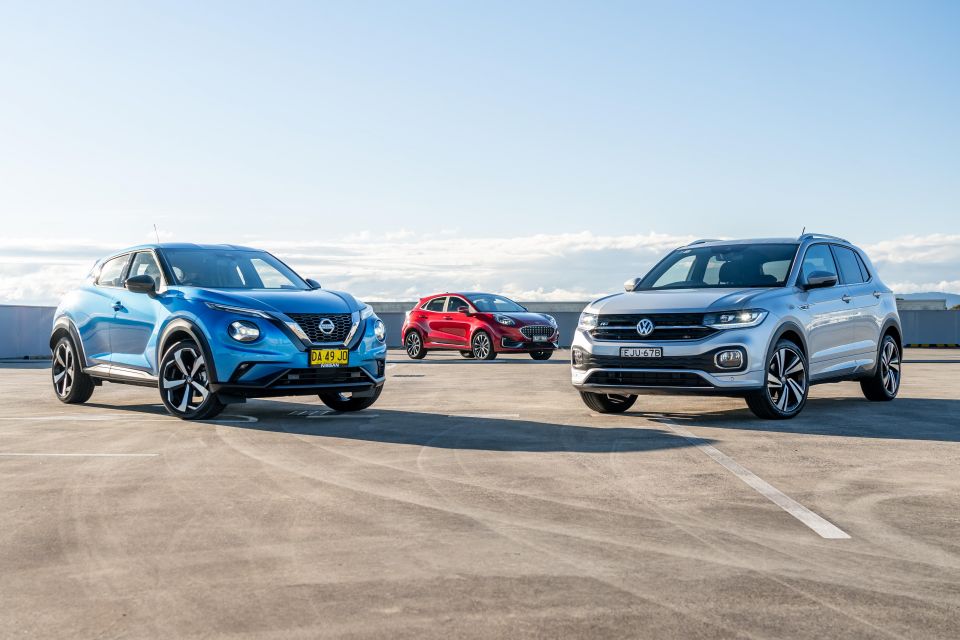
I know it sounds like a cop out, but people tend to buy small SUVs like this with the heart over the head.
The Nissan Juke looks more like a concept car than a road car, and its interior sports some exciting colours and trims. It’s the aesthete’s choice, but can’t quite match the other pair’s drivetrain refinement and ride comfort.
The Ford Puma is the driver’s choice, with the most eager powertrain, super-quick steering, and keen handling like a sporty hatchback. But its back seats aren’t much use and it’s the priciest car here – albeit not by much.
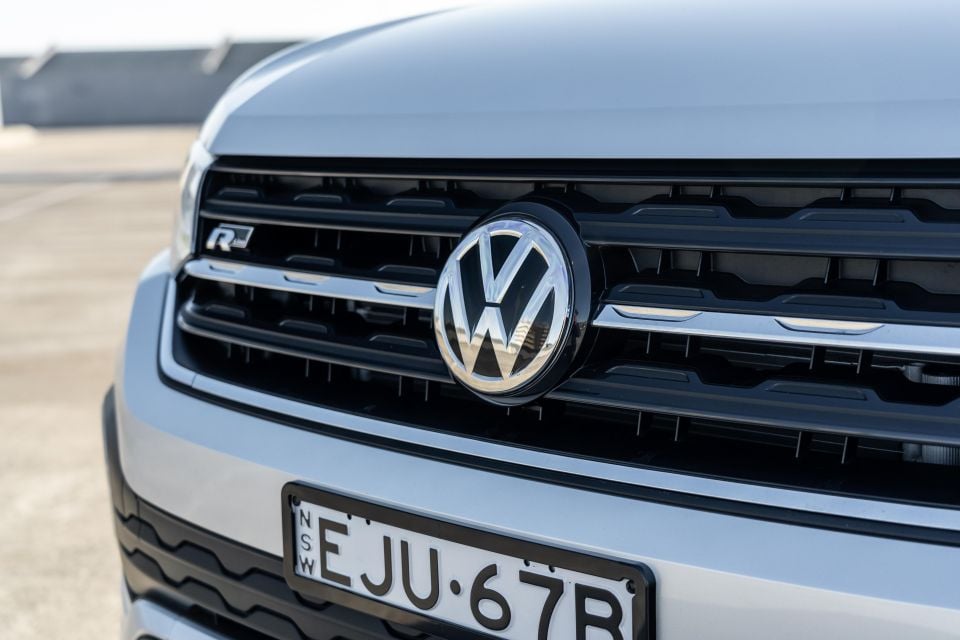
The Volkswagen T-Cross is probably the most well-rounded offering here, in that it comes with plenty of cabin tech and features, good ride comfort and refinement, sturdy driving dynamics, and the most practical cabin.
Again, the heart wants what it wants, but the head says Volkswagen.
Click the images for the full gallery
MORE: Ford Puma news, reviews, comparisons and videos MORE: Nissan Juke news, reviews, comparisons and videos MORE: Volkswagen T-Cross news, reviews, comparisons and videos
Share your thoughts with us in the comments below!
Share your thoughts and write a review of a car you own and get featured on CarExpert.


CarExpert.com.au
4 Hours Ago
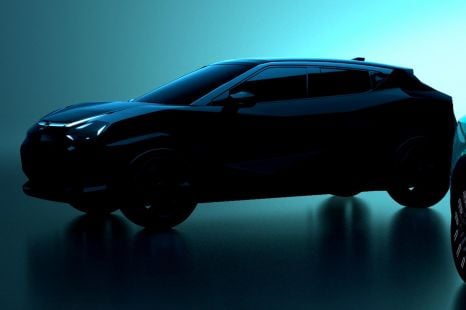

Damion Smy
18 Hours Ago
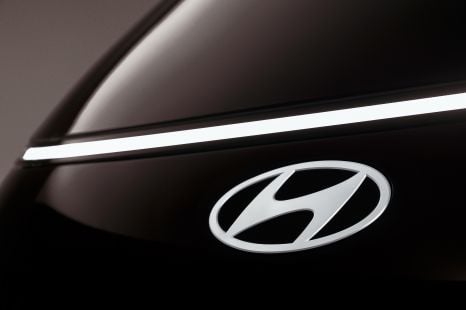

Damion Smy
21 Hours Ago
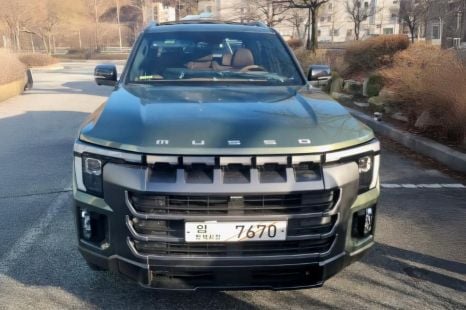

Damion Smy
1 Day Ago


Damion Smy
1 Day Ago
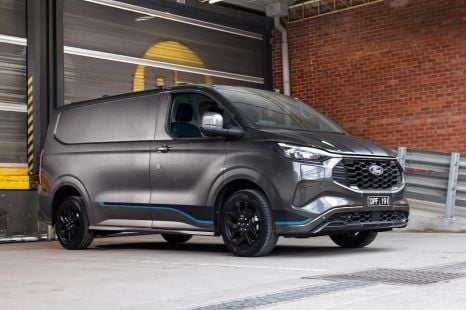

Damion Smy
1 Day Ago